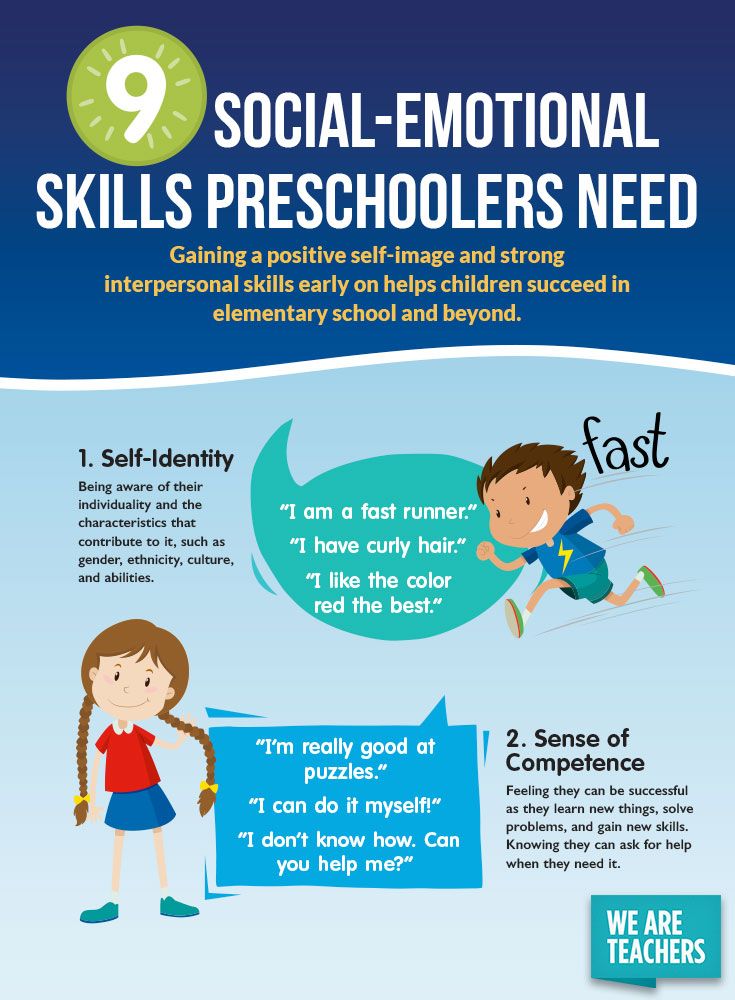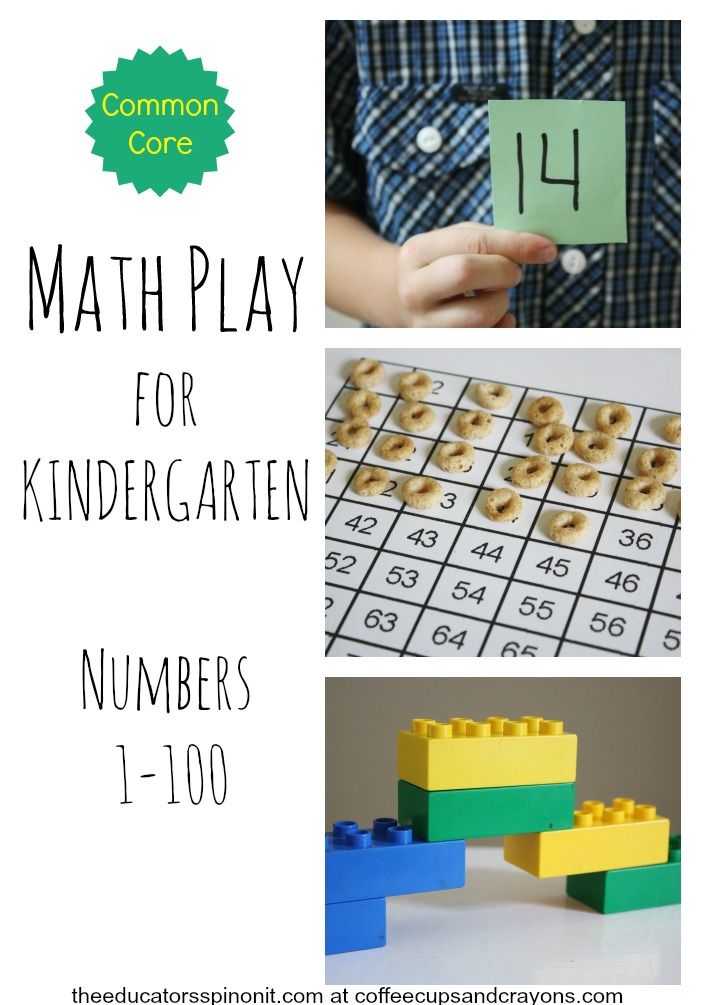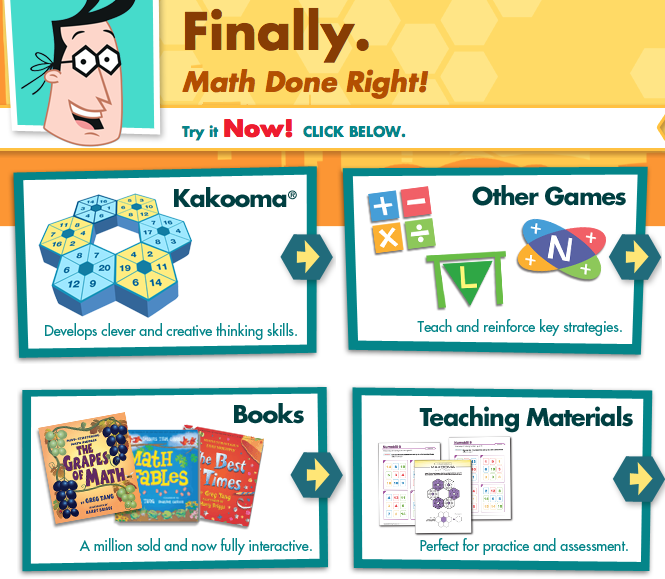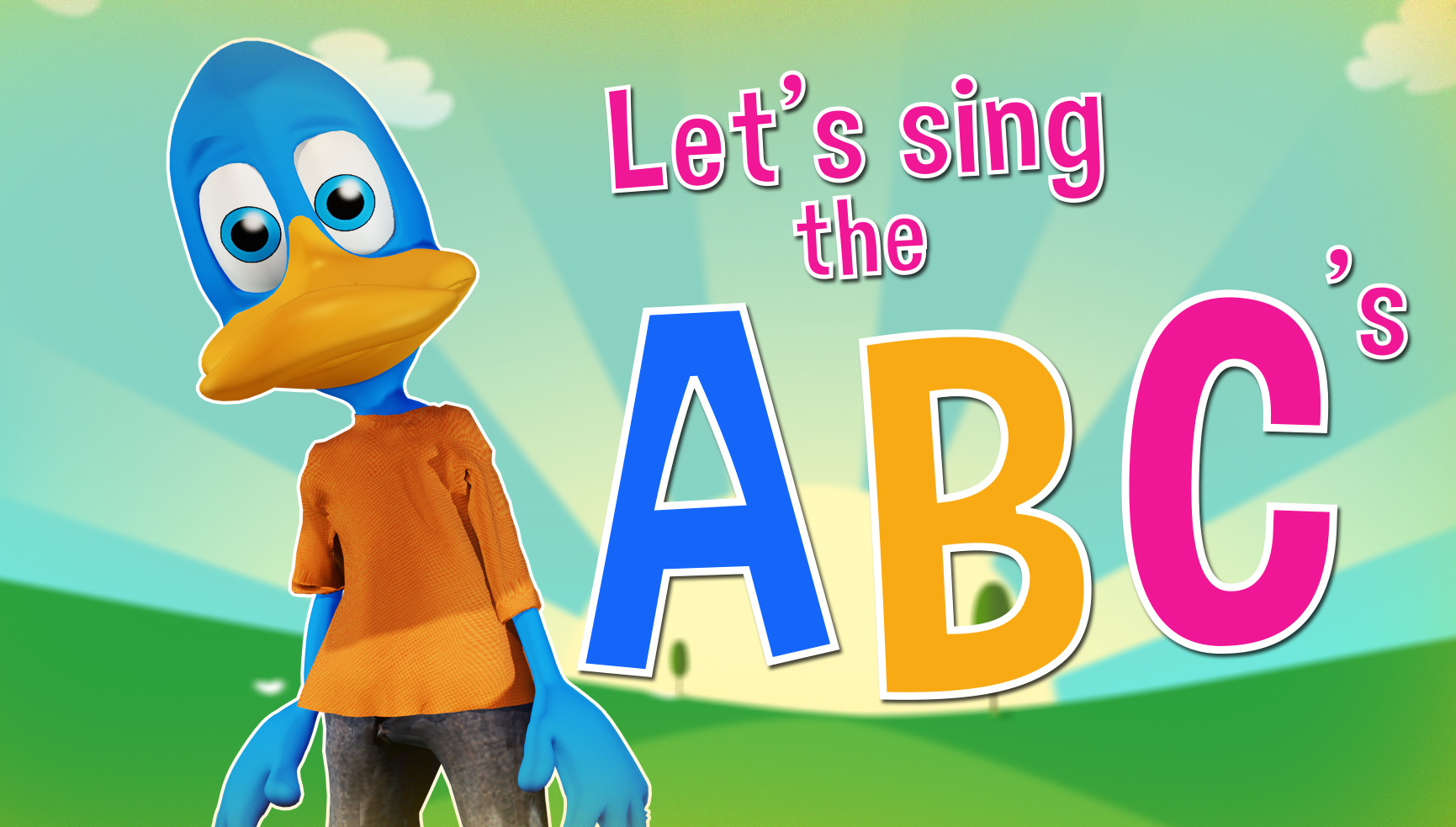Why is social emotional learning important in early childhood education
The Importance of Social-Emotional Learning in Early Childhood
Dr. Lorea Martinez, Author, Social Emotional Learning Consultant, Researcher and author of Teaching with the HEART in Mind discusses with HiMama the importance of not only recognizing but attuning to emotions of young children during early childhood.
Lorea gives 5 tangible tips for educators who are looking to bring Social-Emotional Learning (SEL) into the classroom through the HEART method that Dr. Martinez created. In doing so, educators can recognize and redesign their curriculum and personal teaching philosophy in order to help children develop their social-emotional skills.
Through the HEART method (outlined below), educators can help children:
H- Honor their emotions. Name, interpret and identify your emotions. Many children start to learn about their emotions very young and often in the classroom. It’s important to talk about emotions in the classroom to help children identify and understand that it’s ok to have all of these emotions whether good or bad and to help regulate them.
E- Elect their responses. This is a time to create space that allows individuals to make a positive decision and to choose their behavior. Children may learn to “take a deep breath” or “take a break” during the times they have “big” feelings in order to help them not react but rather observe the feelings and calm themselves down before reacting.
A- Apply empathy. This aspect is a very important part in early childhood. For young children to be able to see the emotions in other children and being able to talk to other children about their emotions and feelings is super important as this is carried on through out adulthood.
R- Reignite their relationships. This aspect is all about establishing and maintaining positive relationships with others over time. The early childhood setting is a great place for young children to practice this.
T- Transform with purpose. This part of the HEART acronym looks at how individuals can be helpers…not just consumers.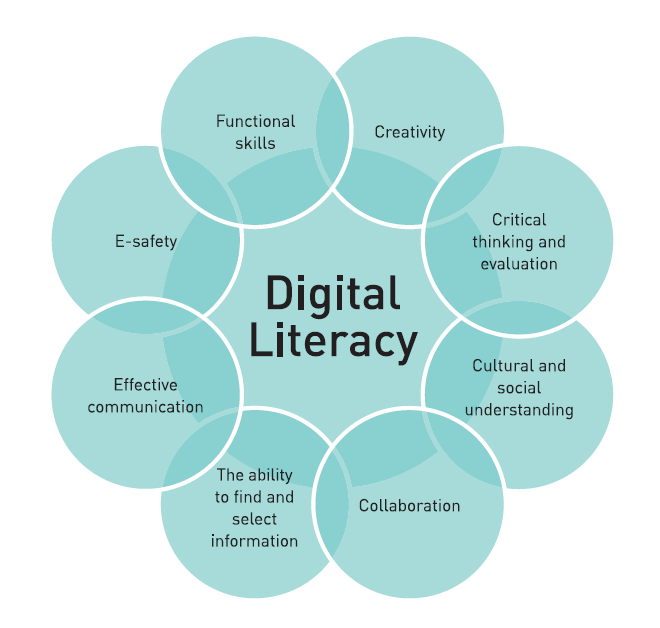 How can we help our families, communities and environments to be better by using our strengths and assets.
How can we help our families, communities and environments to be better by using our strengths and assets.
Dr. Martinez explains that SEL (social-emotional learning) is often seen as something separate from teaching. She encourages rather see SEL as part of teaching in order to see progress in young children. In order for educators to see the SEL skills in their children, they also need to practice these skills themselves. Adults should also have a toolbox of ways to deal with big emotions in a productive and caring way as well as show empathy for others- we need to practice these skills in an effective way so we can teach these things to children.
If we are nurturing children’s natural curiosity that children have to learn and know new things, we are more effective educators.
Dr. Lorea Martinez
Lorea recommends 3 key strategies to help educators bring SEL into the classroom:
-
Explicit Instruction– When students are coming together during circle time and you’re doing morning greetings, this is a great opportunity to bring explicit lessons about social- emotional skills.
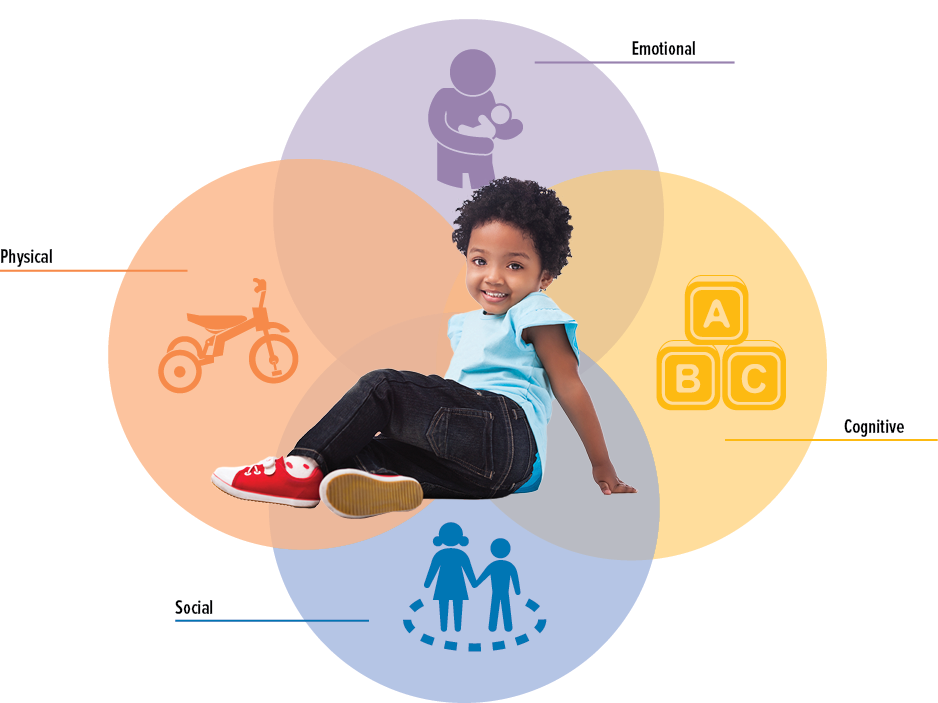 For example, checking in with the students and asking “how do you feel today?” By sharing feelings, this increases their vocabulary for students and also helps them understand and recognize their feelings and others around them.
For example, checking in with the students and asking “how do you feel today?” By sharing feelings, this increases their vocabulary for students and also helps them understand and recognize their feelings and others around them. - Integrate with our Teaching Practices– As an educator, consider your routines and classroom set up and think about the spaces you provide to students for them to practice social-emotional skills. Consider the structure of your classroom and philosophy to ensure it’s helping rather than hindering children’s abilities to regulate and explore all of their emotions.
- Connection with Academic Content- Reflect on the moments children are identifying letters, words and numbers, this is a great chance to bring in the SEL component and discuss things that may be more interesting and less interesting to the children. For example, typically children may be
very excited about science and experiments, so being explicit about the emotions present during these times as well as during more mundane subjects like math and counting.
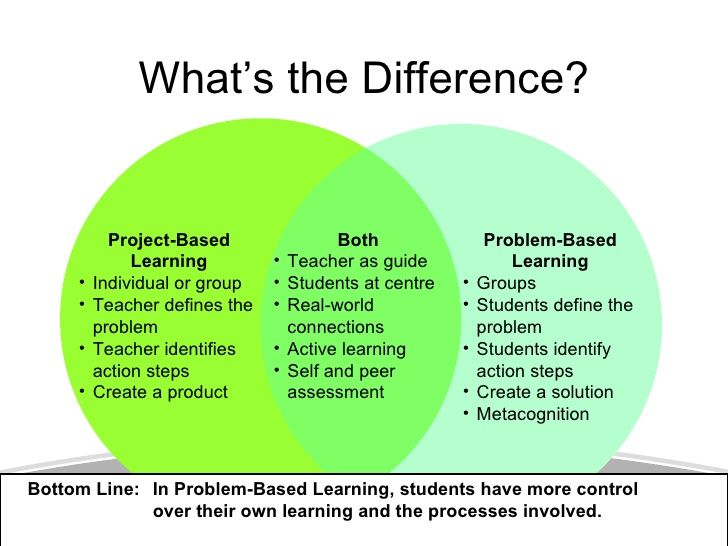 Emotions have a huge range and helping children identify how they feel during certain tasks and learning opportunities is key.
Emotions have a huge range and helping children identify how they feel during certain tasks and learning opportunities is key.
Dr. Martinez suggests that at the end of the day, taking inventory on your current teaching practices and considering the opportunities you give your children to recognize, reflect and connect with themselves and others around their emotions wether good or bad, big or small is a great starting point in implementing social-emotional learning into your classroom.
Want to connect with Dr. Lorea Martinez and learn more about TEaching with the HEART in Mind or purchase her book? You can do so through her website, Facebook, or Twitter!
Episode 248 Transcripts
Lorea MARTINEZ:
And when we teach those skills from early on, truly we are planting the seeds for having healthy adults.
Ron SPREEUWENBERG:
Lorea, welcome to the Preschool Podcast!
MARTINEZ:
Thank you for having me!
SPREEUWENBERG:
It’s our delight to have you. To our listeners out there: on the show today we have Dr. Lorea Martinez. She is an author, social-emotional learning consultant and researcher. We’re going to talk to her a bit today about the importance of emotions in early-childhood education, something that’s so important. Let’s start off learning a little bit about you, Lorea, and how you got into this very important subject matter.
To our listeners out there: on the show today we have Dr. Lorea Martinez. She is an author, social-emotional learning consultant and researcher. We’re going to talk to her a bit today about the importance of emotions in early-childhood education, something that’s so important. Let’s start off learning a little bit about you, Lorea, and how you got into this very important subject matter.
MARTINEZ:
Sure. So, I started my career in education as a special education teacher. I worked in the classroom for several years. And when I decided to enroll in a PhD program, I switched my focus and worked for a large charter management organization looking at student achievement data. And I did that for about four years.
And as I was doing that role, and it was the time for me to decide the topic of my research. And I had this intuition and this perspective that when we were looking at student achievement data, there was a set of skills that we were not looking at.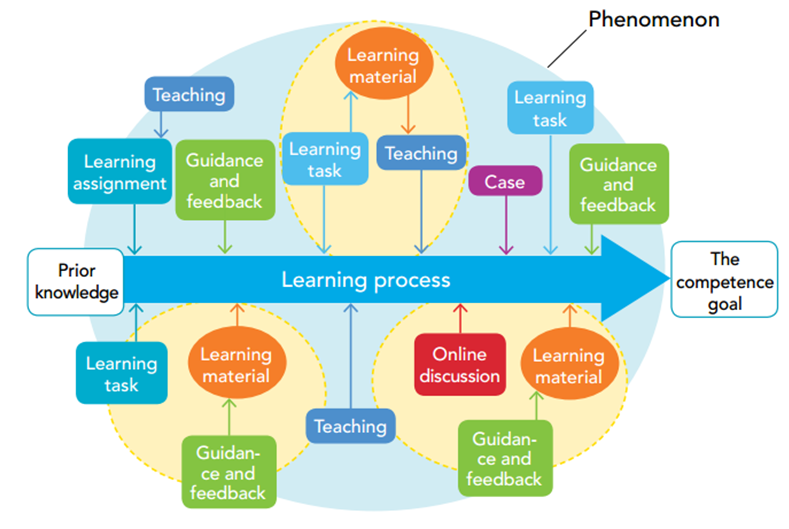 It was mostly looking at standardized results and looking at the skills that students were using in the classroom, but only from an academic standpoint. And because of my background in special education, I saw there was something missing.
It was mostly looking at standardized results and looking at the skills that students were using in the classroom, but only from an academic standpoint. And because of my background in special education, I saw there was something missing.
And this is how I decided to study social-emotional learning [SEL] for my doctoral dissertation. And at the beginning, when I first started, I didn’t even know that the SEL field existed. But I found the field; I fell in love with it. And since I finished my program – this was back in 2014 – I’ve been doing this work since.
SPREEUWENBERG:
Awesome. Yeah, it’s certainly something that comes up a lot in the Podcast, in terms of social-emotional learning. And it’s funny because there seems to be a bit of a disconnect between the passion and understanding of how important this is among the early-childhood education community and what we’re doing in terms of focusing a lot more on the assessment and school readiness academic side of things, oftentimes, in the classroom.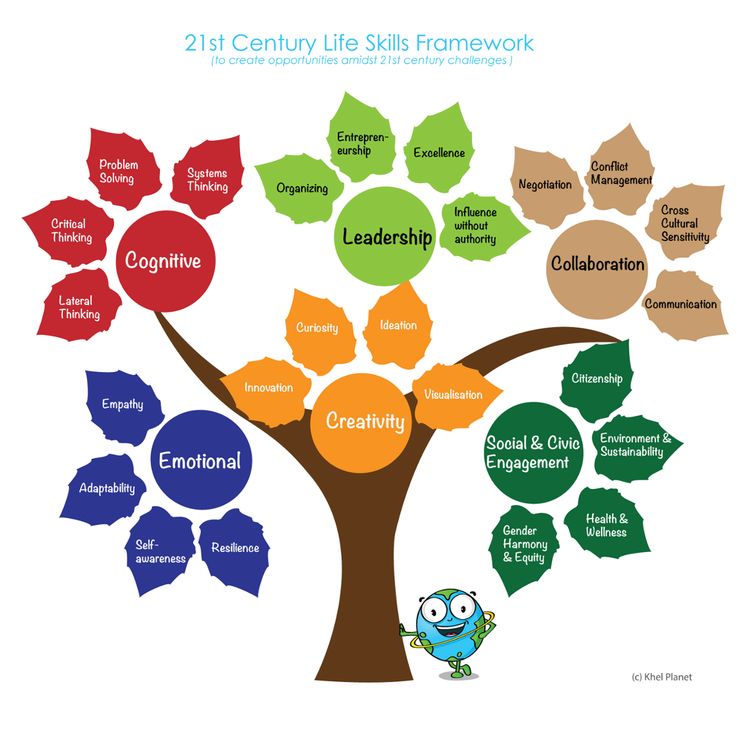
So, it would be good to dive into that a little bit more and starting with something that you’re calling the “HEART Skills”. Tell us a little bit more about what that is and maybe we can dive into a little bit more about how to put it into practice, as well.
MARTINEZ:
Sure. So, I created, through my work in the SEL field, I created the “HEART in Mind” model. And that’s a model to make the process of teaching and integrating SEL into the classroom practical and applicable to educators.
And “HEART” is an acronym that stands for five essential social-emotional skills. So, the H is “Honor your emotions”. E is “Elect your responses”. A is “Apply empathy”. R is “Reignite your relationships”. And T is “Transform with purpose.”
So, any educator that is wondering how to bring SEL to their classroom, they can look at these five essential skills and design educational experiences that are going to help students to practice, to learn those skills and really internalize them so they can apply them not only in the classroom, but also outside of the of the early-childhood setting.
SPREEUWENBERG:
Cool. So, maybe a good place to start is for us just to go one level deeper on what each of those means in practice.
MARTINEZ:
Yeah, so, “Honor your emotions” means to name, interpret and being able to identify your emotions. And I think that’s a place that is not new for early-childhood educators. I think that that’s a place where many children start to learn about their emotions. And that’s being done in the classroom by talking about emotions, by helping the child being able to put a name to what they are experiencing. And as we know, those early-childhood years are so important to establish that foundation of healthy developmental and healthy regulation when it comes to emotions.
The second competency, “Elect your responses”, has to do with creating that space that allows us to make a positive decision, to choose our behavior. And in early-childhood, that’s an aspect that it is in progress.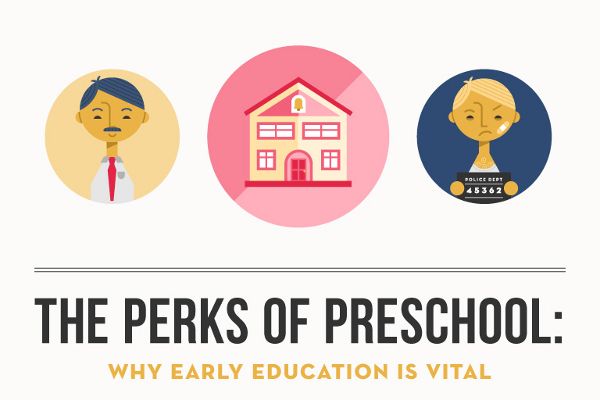 So, children may learn to take a deep breath or take a break and to notice when they are experiencing those big feelings that they don’t need to react to this situation. But there are certain things that they can do to calm themselves down before they can engage with a friend or before they can participate in a classroom activity.
So, children may learn to take a deep breath or take a break and to notice when they are experiencing those big feelings that they don’t need to react to this situation. But there are certain things that they can do to calm themselves down before they can engage with a friend or before they can participate in a classroom activity.
For the A, “Apply empathy”, that has to do with being able to see and understand the emotions of others. So, being able to talk to children about, “Oh, how do you think your friend felt when you took away his or her toy?” To be able to look at characters in stories and think about how other people may feel and being able to connect with that feeling. And that’s a skill that we start very early on to teach it explicitly. But that’s a skill that we are going to be developing into adulthood.
For the R, “Reigniting relationships”, that ability to establish positive relationships and maintain those relationships over time. And I feel like the early-childhood setting is so beautiful when it comes to relationships because children are really able to build those connections and they can really play with any child.
So, in that setting, it could look like and taking turns and talking about the things we appreciate about somebody else and reflecting on how it makes us feel to have good friends in the classroom. It really creates that positive learning environment for children.
And finally, the T, “Transform with purpose”, I feel like it was very important to me to include a skill that would allow children and youth to not only look at themselves as individuals, but also their capacity to contribute to the betterment of the world. So, “Transform with purpose” looks at how we can be helpers in the world, not only consumers but also helping our communities, our families, our immediate environments to be better with our actions and with the assets and the strengths that we bring.
So, in an early-childhood setting, that could look like students or children helping to clean the garden or design a mural for the school or do something that it’s going to enhance and improve the environment.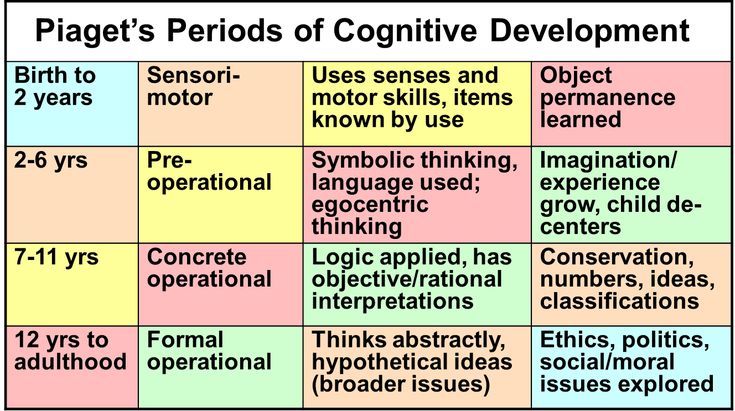
SPREEUWENBERG:
That one is super exciting because, as somebody who operates sort of in the business world, I know there’s increasing conversation about being more social impact-minded and thinking about our influence in the world as companies. And so getting our youngest generation thinking about purpose and contributing to the bitterness of the world, as you say, at such an early age, it’s exciting to think about what that will mean for the future if we’re applying that. So, I love it.
Why do you think – going back to what we were chatting about a little bit before – why do you think there’s a bit of a disconnect between a lot of folks’ understanding of the importance of these aspects and where we’re at in early-childhood education today, which is, I guess, arguably not quite at the point where we’re applying all of these aspects of social-emotional learning in the classroom quite yet?
MARTINEZ:
Sure. So, I think there are a couple of things.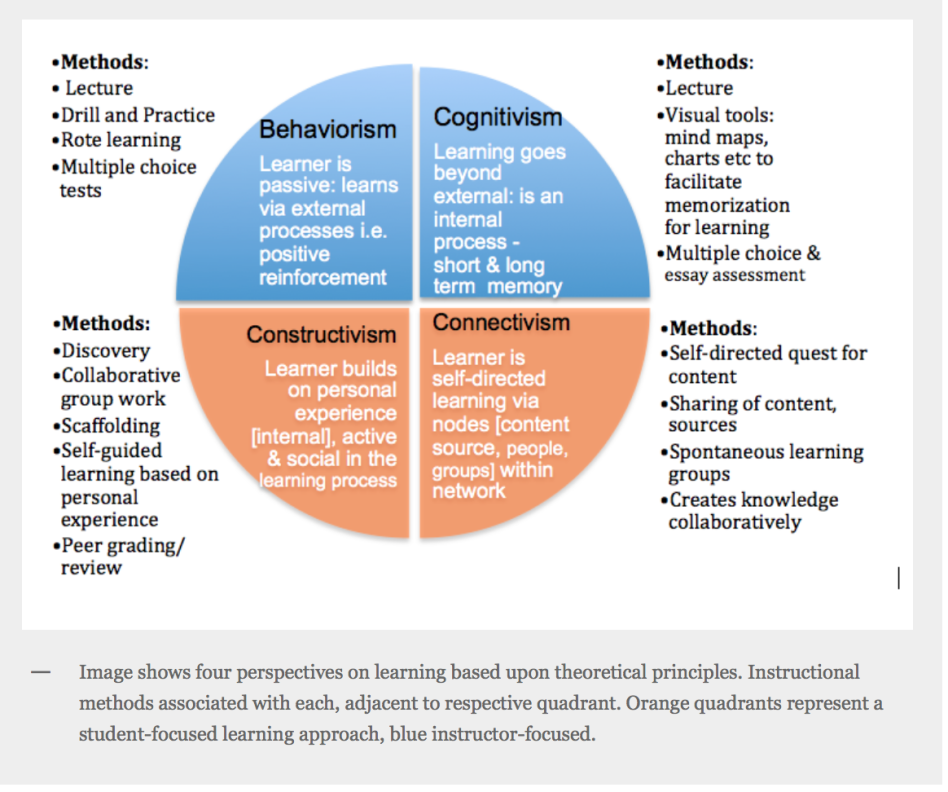 One is that the misconception, I would say, that SEL is separate from academics. And I think that the tension and the pressure to get students ready for kindergarten drives a lot of what happens in early-childhood settings.
One is that the misconception, I would say, that SEL is separate from academics. And I think that the tension and the pressure to get students ready for kindergarten drives a lot of what happens in early-childhood settings.
But SEL is not separate from academics. When educators introduce and embrace SEL in their practice, that is good teaching. If we are engaging students emotionally, if we are nurturing their curiosity – the natural curiosity the children have to learn and to know new things – we are more effective educators.
So, if we want to have students that are motivated intrinsically to learn, where they can pursue their passions, the things that are interesting to them, we are infusing SEL in that process. And that means that students will be more successful from an economic standpoint. So, I think that the first part is seeing SEL not as something separate, but something that is part of good teaching.
The other aspect is that in order for educators to really teach SEL effectively, they need to practice these skills themselves. And something that I often say is that we cannot teach something that we don’t practice or know ourselves. So, a part of the work of SEL is for the adult to cultivate their own capacity, to connect with their emotions, to have that toolbox of things that we do when we are stressed, to show empathy for others. We need to practice that in a very intentional way so we can teach that effectively to students.
And something that I often say is that we cannot teach something that we don’t practice or know ourselves. So, a part of the work of SEL is for the adult to cultivate their own capacity, to connect with their emotions, to have that toolbox of things that we do when we are stressed, to show empathy for others. We need to practice that in a very intentional way so we can teach that effectively to students.
And there is a part of that that asks us to have some vulnerability and to really show up and be fully present with our students. And I think that may be a place where sometimes it can be scary for teachers.
SPREEUWENBERG:
Yeah, those are excellent points. I’m glad I asked that question. And now let’s take that a step further and talk a little bit more about the practicality of the HEART and Mind model or approach. If I’m an early-childhood educator and I want to bring this more into my practice in the classroom, what are things that I can do more practically, or tools that can be used to have that focus?
MARTINEZ:
Sure.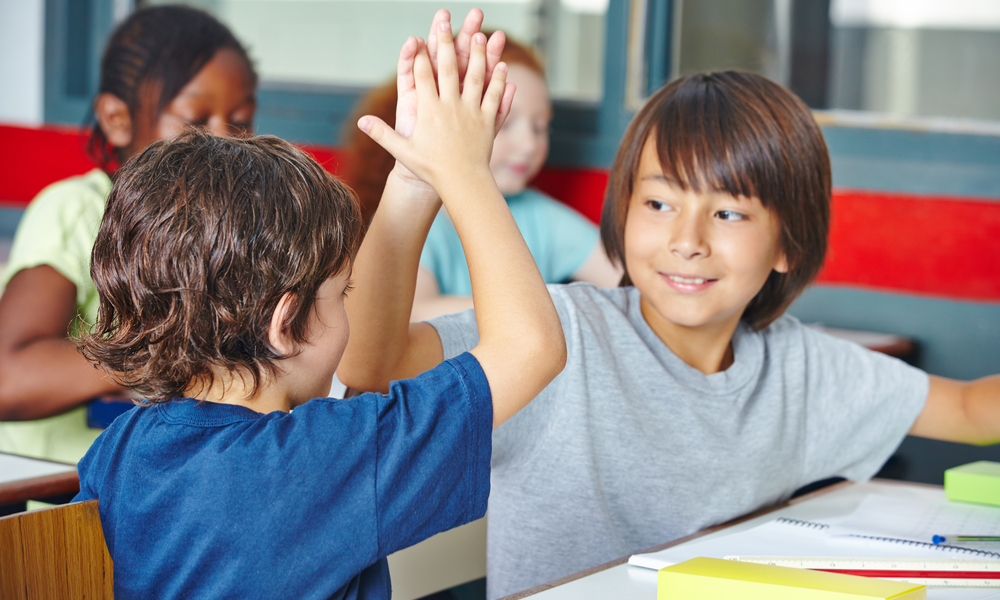 So, there are three kind of key strategies that help educators bring us SEL into the classroom. The first one is the explicit instruction. And that’s something that early-childhood educators could do in their morning meeting, for example, when students are coming together to the rug and there’s a story that is being read or their students are doing their greetings. That is a perfect moment to bring those explicit lessons about these social and emotional skills.
So, there are three kind of key strategies that help educators bring us SEL into the classroom. The first one is the explicit instruction. And that’s something that early-childhood educators could do in their morning meeting, for example, when students are coming together to the rug and there’s a story that is being read or their students are doing their greetings. That is a perfect moment to bring those explicit lessons about these social and emotional skills.
And that can look like that emotional check-in with students by asking students, “How do you feel today,” having students go around and share their feelings. And also increasing the vocabulary for students. In some of the research that I’ve done, what we have seen is that students have very limited vocabulary to describe their emotions. Kind of like the go-to places are “Sad, happy, upset”. But beyond that, we need to increase their vocabulary so students have the words to be accurate [in] describing their emotions.
The second strategy is to integrate with our teaching practices.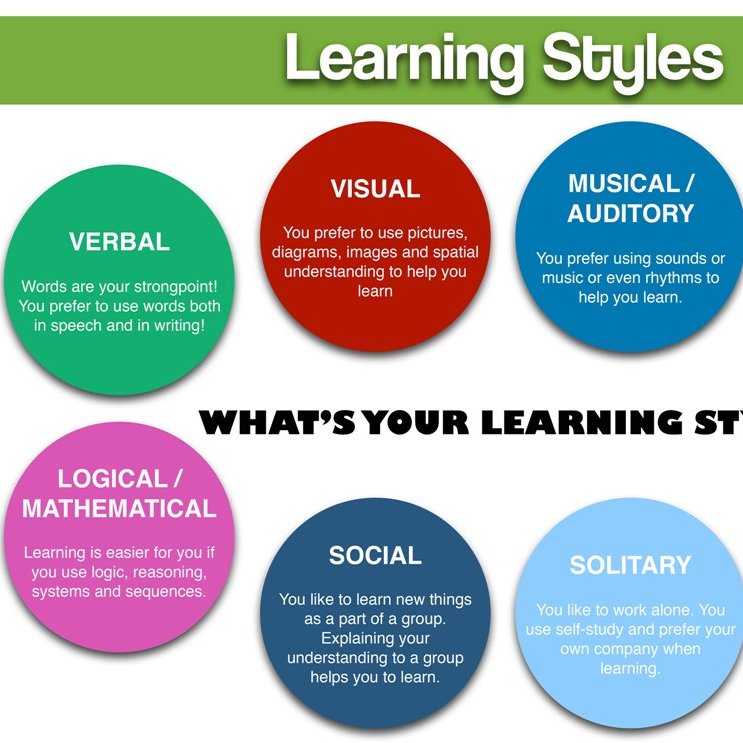 And that means that, as an educator, you look at your routines and how your classroom is set up and think about, what are the opportunities that you have to create the space for students to practice those skills?
And that means that, as an educator, you look at your routines and how your classroom is set up and think about, what are the opportunities that you have to create the space for students to practice those skills?
And in an extreme example – which I know this doesn’t happen in early-childhood settings, but just to illustrate what I mean – is if you were to just do lectures for students, that would be a strategy that would not be helping students to enhance their SEL skills. But any opportunities to create space for students to interact with each other, to work in groups, to create, to do a construction or to do arts and crafts in a group where they have to negotiate and talk about what are the materials they want to use, any play-based setting, that brings an opportunity for students to practice those skills.
And I think where the intentionality of the SEL comes into place is when the educator is able to connect that opportunity with the explicit skill that is being developed through that practice.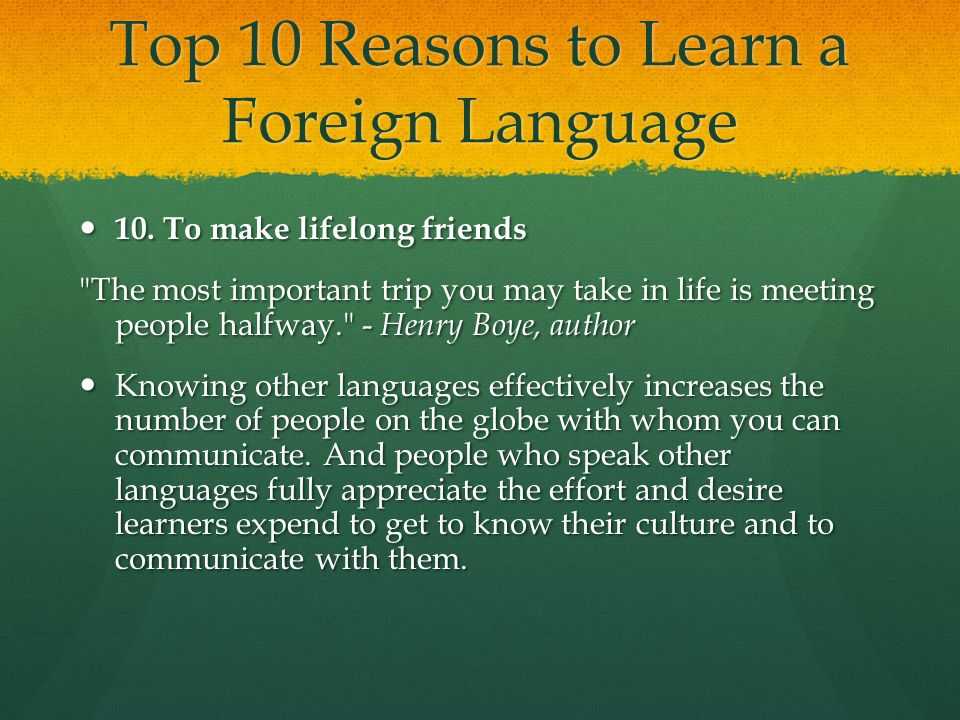
And then the third part is the connection with the academic content. So, those moments when students are doing their number literacy, where they are starting to identify words or practice their letters, all of those opportunities are also chances for the teacher to bring that SEL component and to talk about, for example, things that are more exciting or things that may be not as interesting.
The emotions that bring different subjects: like, for example, many students are very excited about science or doing experiments or discovering what’s in nature. So, being explicit about like, these are the emotions that the subject itself generates, that creates an opportunity to continue to reinforce the fact that we use those skills to pretty much do any task on a daily basis.
SPREEUWENBERG:
And it’s interesting because all three of those points about how to apply the HEART and mind certainly connect really well to your previous two points about why some of the areas of development to apply it more, in terms of not separating it from the academics and thinking about it as something different and practicing it ourselves as adults, seems like you would have to be doing those things very closely in those points.
And then what about from a tools perspective? So, if I’m going into my classroom tomorrow and I want to apply some of these pieces, like, any tips on that side?
MARTINEZ:
Yeah, so I think that those three, kind of like the three brackets that I described, can be a starting point. I think that having that clarity of the framework, the HEART skills and knowing, “Okay, these are five essential social-emotional skills, I can look at these skills and bring them, integrate them into my classroom.”
And the book that I recently published, Teaching With the Heart in Mind, goes in-depth into each one of those competencies. And I provide tools and strategies for those three aspects of implementation that teachers can take and pretty much implement and adapt to their teaching. So, this is a model that can complement other frameworks that teachers may be using in their classrooms.
SPREEUWENBERG:
Oh, cool, that’s awesome. And I forgot to mention, but I thought it was kind of funny because a personal experience that really resonated with what you’re saying about a vocabulary-related to emotions, because I realized with my three-year-old [child] when he says a word related to his emotions, that’s almost what I’m most impressed with the word. Like, if he says something like, “Oh, I’m frustrated,” or something, I’m like, “Whoa, where did you learn that word? That’s pretty cool.” So, for some reason, that resonates with me as well, even just as a parent at home.
And I forgot to mention, but I thought it was kind of funny because a personal experience that really resonated with what you’re saying about a vocabulary-related to emotions, because I realized with my three-year-old [child] when he says a word related to his emotions, that’s almost what I’m most impressed with the word. Like, if he says something like, “Oh, I’m frustrated,” or something, I’m like, “Whoa, where did you learn that word? That’s pretty cool.” So, for some reason, that resonates with me as well, even just as a parent at home.
MARTINEZ:
That’s right. And I’ve heard from so many parents that their kids go to schools where SEL is infused and it’s taught, how the kids are coming back to the parents and saying things like, “Oh, Dad, you seem to be frustrated. I think you should take a few deep breaths.”
It goes back to our families. When kids learn these skills in school and it is normalized and validated that we all have feelings and it’s okay to have a bad day or to be frustrated about something that we are trying to do, that it’s not working, to be able to say, “Wow, that was really frustrating,” there’s something I can do about it.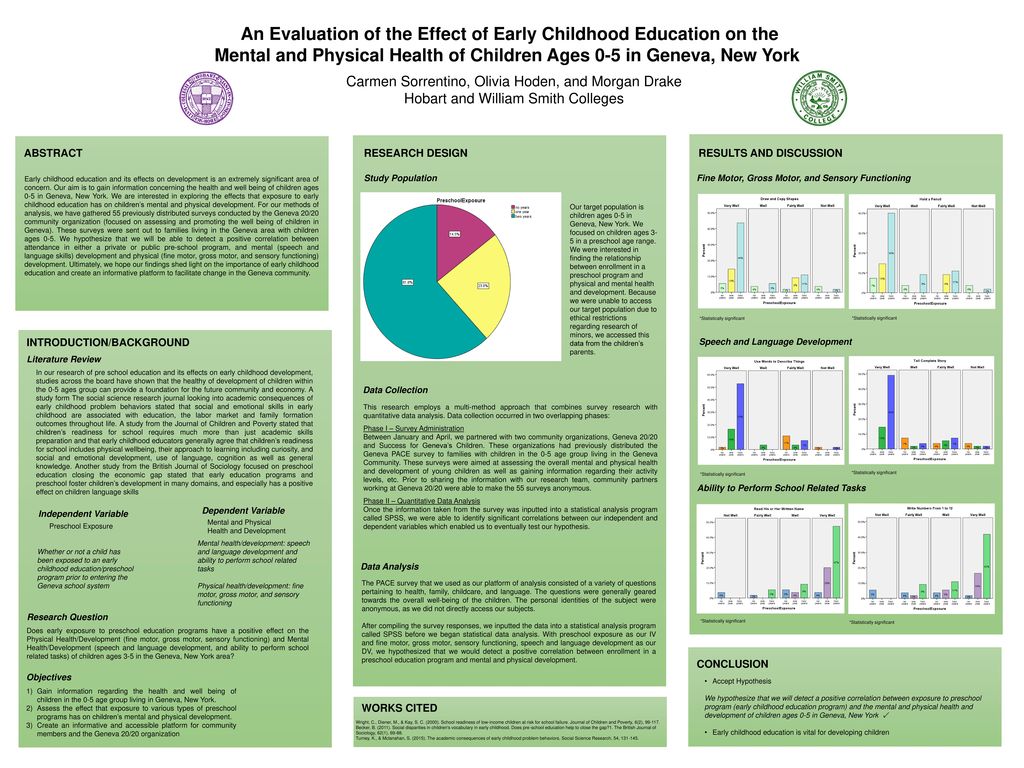 And when we teach those skills from early on, truly we are planting the seeds for having healthy adults.
And when we teach those skills from early on, truly we are planting the seeds for having healthy adults.
SPREEUWENBERG:
Yeah, that’s so wonderful. And how humbling to have your young children teach you something and help you out as an adult. It’s wonderful, actually, it really is. Okay, cool. So, some great tips there, it sounds like, in your book. If our listeners want to get access to your book, where’s the best place for them to get that information?
MARTINEZ:
Sure, they can go to my website: www.LoreaMartinez.com. They can see the content of the book there and there are links to where you can purchase [it]. It’s currently available in all major book retailers. So, if people want to buy and support their local bookstore, they can do that. Or they can also buy on Amazon, if that’s their choice.
SPREEUWENBERG:
Okay, wonderful. And for all the educators out there who’ve been dealing with all the challenges over the last year and parents with children at home who are doing remote learning and all the frustrations – one of our words of the day, “frustrated” – of dealing with that at home, any words of advice or wisdom or comfort as we think more optimistically towards the future in 2021?
MARTINEZ:
Yes, first I would extend my appreciation to all educators and parents who are dealing with this pandemic on a regular basis.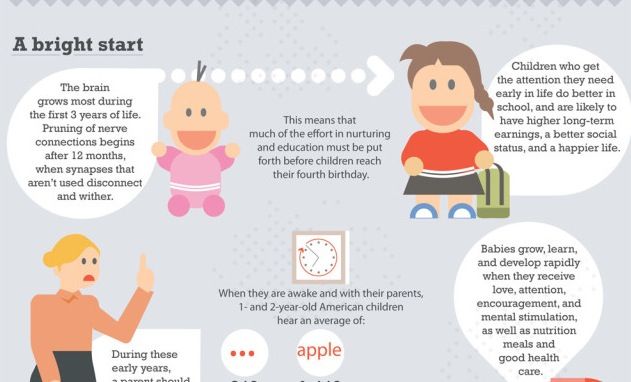 I’ve been so impressed with my own children, to see how they have developed this resilience and how teachers have come to the task and really found creative ways to keep kids engaged and motivated and just continuing to be kids. So, first I just want to express my gratitude.
I’ve been so impressed with my own children, to see how they have developed this resilience and how teachers have come to the task and really found creative ways to keep kids engaged and motivated and just continuing to be kids. So, first I just want to express my gratitude.
And then in terms of any advice, I would say that it’s never too late to start learning and practicing SEL skills. So, even if you are a veteran teacher and this is something that you want to do, there’s always a time where you can get this started. And it is what I believe, from my personal experience, but also the growth that I’ve seen in educators, that it is a transformational process for people when they are able to practice those skills and truly engage with the process and then give that gift to their students. Really, it’s such an amazing way to create a flourishing learning community.
SPREEUWENBERG:
Yeah, that makes a ton of sense. And those are some great words to leave us with, Lorea.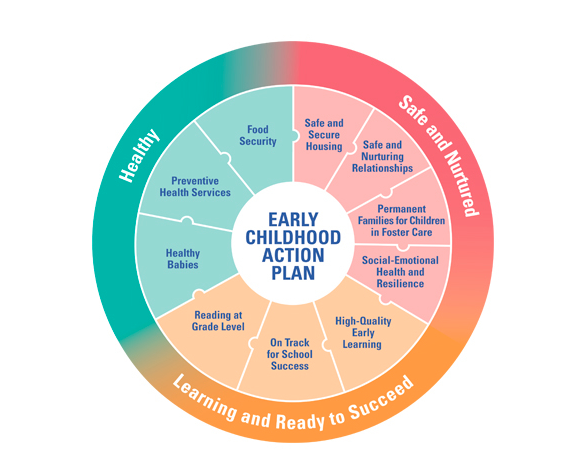 Thank you so much for joining us on the Preschool Podcast. And we wish you all the best. And thanks for all these wonderful tips. And for our listeners, check out Lorea’s website, www.LoreaMartinez.com and her book, Teaching With the Heart in Mind. Thanks, Lorea, for joining us!
Thank you so much for joining us on the Preschool Podcast. And we wish you all the best. And thanks for all these wonderful tips. And for our listeners, check out Lorea’s website, www.LoreaMartinez.com and her book, Teaching With the Heart in Mind. Thanks, Lorea, for joining us!
MARTINEZ:
Thank you, Ron, for having me. I had a great time!
Why Does Social Emotional Learning Matter?
Preschool is a time of rapid growth for young children. Not only are they studying letters and numbers, but they are also developing social and emotional skills—skills like making friends, sharing toys, and listening to the teacher—that they will need to succeed in school and in life.
For 20 years, EDC’s Karen Cairone has been helping early childhood educators build social emotional learning into the school day. She is also a consulting editor for the National Association for the Education of Young Children’s Young Children Magazine.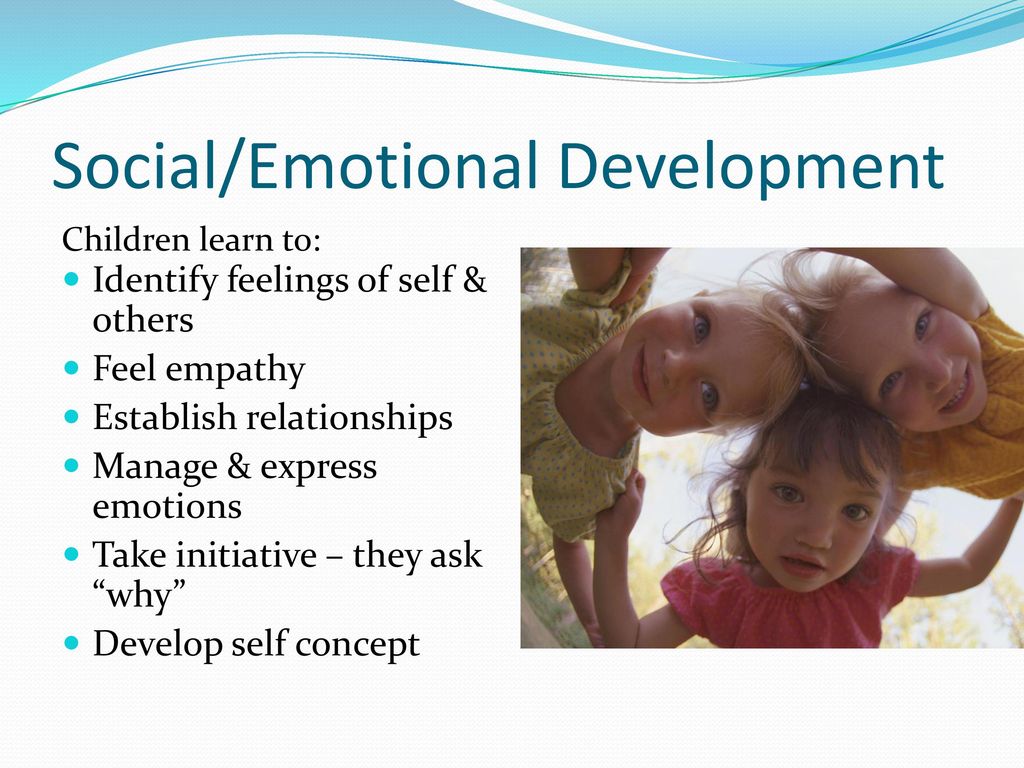 Here, she talks about the importance of social emotional learning in the early years and why more schools are teaching these skills now.
Here, she talks about the importance of social emotional learning in the early years and why more schools are teaching these skills now.
Q: Let’s start with the basics. For preschoolers, what kinds of skills fall under the umbrella of “social emotional learning?”
Cairone: Generally speaking, social and emotional skills are what allow children to make friends, follow directions, and to be comfortable in a classroom. There are hundreds of social and emotional skills that teachers model and teach throughout the preschool years. But to whittle these into three main categories, I’d have to go with relationship skills, self-control/regulation, and initiative.
A lot of the work that preschool teachers do serves to bolster these skills. Relationship skills include the ability to get along with other children, make and keep friends, and enjoy playing with others. Self-regulation is all about being able to be patient, control strong emotions, and take turns. Finally, teachers look for initiative. Initiative is both a child’s ability to advocate for his or her needs, as well as his or her ability to find activities of personal interest in the classroom.
Initiative is both a child’s ability to advocate for his or her needs, as well as his or her ability to find activities of personal interest in the classroom.
Q: Why is social emotional learning important early in life?
Cairone: These basic skills set children up for success. In order to learn a new math skill, for example, you first have to be able to focus. It’s really hard to learn if you are not comfortable paying attention and taking turns in a classroom setting!
Q: Shouldn’t kids learn many of these skills at home?
Cairone: Absolutely. But if you have a family that is struggling to meet basic needs—whether economic or emotional—then the parents may not be focusing too much on things like sharing and being patient at home. So it’s important for the school to teach those skills. This work is not undone when children leave the classroom; it actually gives children more skills to use at home. And in best case scenarios, you have families reinforcing and teaching these important social and emotional skills in the home environment as well.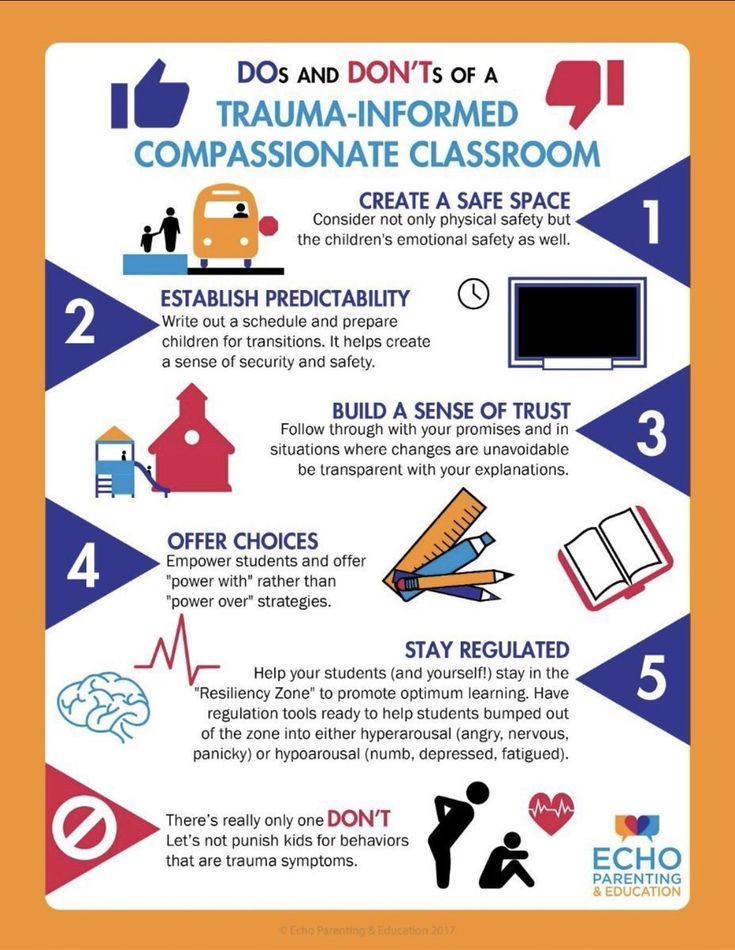
Q: For a long time, schools seemed to emphasize academics over social emotional learning, but that seems to be changing now. Why do you think this change is occurring?
Cairone: I think it has to do with increased concern about bullying, suicide, and school violence. People are paying more attention to the importance of social emotional learning now; they are realizing that these skills matter. The goal of teaching social and emotional skills is to build students’ mental health and resilience—so that as they grow, they can adapt and handle what comes at them. Students can have a hard time if they lack these basic mental health skills.
Another reason is funding. The passage of the Every Student Succeeds Act provides opportunities to get creative about funding social emotional learning, so districts are able to take advantage of that. It’s put a bigger spotlight on social emotional learning than in the past.
Q: Is there any research that shows social emotional learning can have a positive impact on children’s lives?
Cairone: There is.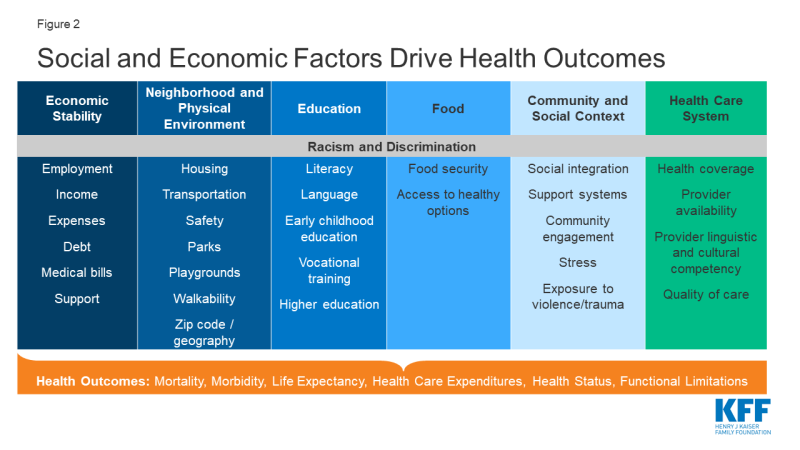 Explicitly teaching social and emotional skills can help students become more resilient, which helps them deal with the effects of trauma or adverse events in their lives. These positive effects last well beyond a single school year. Some research has even shown that teaching social and emotional skills leads to better academic achievement and improved behavior.
Explicitly teaching social and emotional skills can help students become more resilient, which helps them deal with the effects of trauma or adverse events in their lives. These positive effects last well beyond a single school year. Some research has even shown that teaching social and emotional skills leads to better academic achievement and improved behavior.
Q: Are you encouraged by this greater focus on social emotional learning?
Cairone: Yes. Parents and educators are getting the message that these skills matter. And that message is reaching the upper grades, too. In one district I’m familiar with, every student in grades 5 through 12 is reading the book Wonder this year. It provides a common framework for teachers in the school to emphasize kindness and respect for differences. These are core social emotional values! So I think examples like this show that educators are taking social emotional learning seriously. It’s an uplifting trend.
Social and emotional development of preschoolers | Modern educational processes in the preschool educational institution
Conference: Modern educational processes in the preschool educational institution
Author: Sokolova Anna Alexandrovna
Organization: MKDOU No. 46
46
Location: Novosibirsk region, Novosibirsk
We can be sad and laugh, get angry and express their feelings to some degree of acceptable aggression. However, we are often frightened by this expression of emotions in our children. But they, like no one else, have the right to be happy and sad, offended and angry. nine0003
The emotional development of young children and older children is a very important aspect in education. It has been scientifically proven that children who do not know how to correctly express their emotions and determine the emotional background of another person are more depressed and closed from the outside world, this leads to serious problems - from lagging behind in the learning process to real social isolation in which they fall. That is why the emotional development of the child is no less important than the intellectual.
Why is it necessary to develop socially and emotionally? The sooner the child learns to understand the state of others, the easier it will be for him to get used to any team, to find a common language with peers and adults.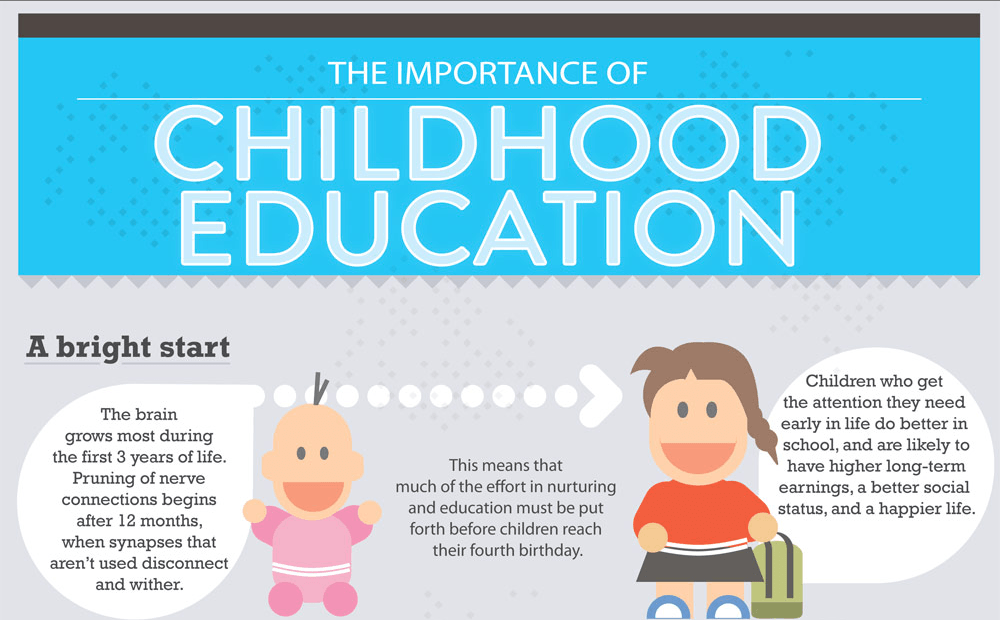
Feelings and emotions play a very important role in the life of every person, especially at an early age. The early preschool period is the time when the multi-color palette of feelings is explored, and the child learns to recognize and correctly show his experiences. At this stage, the child develops new feelings for him: empathy, anticipation, empathy. The development of the child's emotional sphere occurs gradually and is no less important than physical or mental development. They only thank positive emotions, the ability to remember information and speak improves. nine0003
At first, the child communicates with others only through the manifestation of emotions. Therefore, for the normal emotional development of the baby, a variety of emotions are needed. Children perceive the world very emotionally. The explosion of experiences is short and can be very stormy, and the child is not yet able to control his emotions. The emotional reactions of the child are unconscious and unstable - the baby may cry, and after a few seconds suddenly start laughing. If a child grows up in a friendly atmosphere, then he is almost always cheerful. This state is extremely important for the formation of the personality of the baby, the basis of his attitude towards others. If the emotional sphere of the child develops naturally and steadily, he has many chances to grow up healthy and successful. nine0003
If a child grows up in a friendly atmosphere, then he is almost always cheerful. This state is extremely important for the formation of the personality of the baby, the basis of his attitude towards others. If the emotional sphere of the child develops naturally and steadily, he has many chances to grow up healthy and successful. nine0003
Children are very impressionable, emotional arousal has a strong influence on the whole behavior of the baby. In young children, “emotional contagion” can be observed: if one of them starts to cry, then the others immediately support him.
Emotions of children of the second year of life are closely connected with objective activity, its success or failure. They are aimed at the objects to be acted upon, at the situation as a whole, at the actions of the child and the adult himself, at the result obtained independently, at play moments. Interest in the object, combined with the inability to act, causes displeasure, anger, anger, grief. Negative reactions indicate that the baby's mode of action has not yet been formed. So, the child needs help, suggest how to act. Bright, positive emotions, expressed in smiles, exclamations, frequent appeals to an adult, indicate that the child has mastered the action and wants to get the approval of an adult with every independent act. Activity taking place against a calmly concentrated background indicates the mastery of this type of activity. Positive emotions in many cases reflect the level of satisfaction of needs - cognitive, motor. Experiences are now associated precisely with the skills and results characteristic of a person's independence. Therefore, we can say that there is a consistent social development of emotions. In the second year of life, when a peer approaches, the child feels anxiety, can interrupt his studies and rush to the protection of his mother. Communication with other children in early childhood usually only appears and does not yet become complete. By the end of the second year of life, the baby gets satisfaction from the game. There are experiences associated not only with actions, but also with the plot.
So, the child needs help, suggest how to act. Bright, positive emotions, expressed in smiles, exclamations, frequent appeals to an adult, indicate that the child has mastered the action and wants to get the approval of an adult with every independent act. Activity taking place against a calmly concentrated background indicates the mastery of this type of activity. Positive emotions in many cases reflect the level of satisfaction of needs - cognitive, motor. Experiences are now associated precisely with the skills and results characteristic of a person's independence. Therefore, we can say that there is a consistent social development of emotions. In the second year of life, when a peer approaches, the child feels anxiety, can interrupt his studies and rush to the protection of his mother. Communication with other children in early childhood usually only appears and does not yet become complete. By the end of the second year of life, the baby gets satisfaction from the game. There are experiences associated not only with actions, but also with the plot.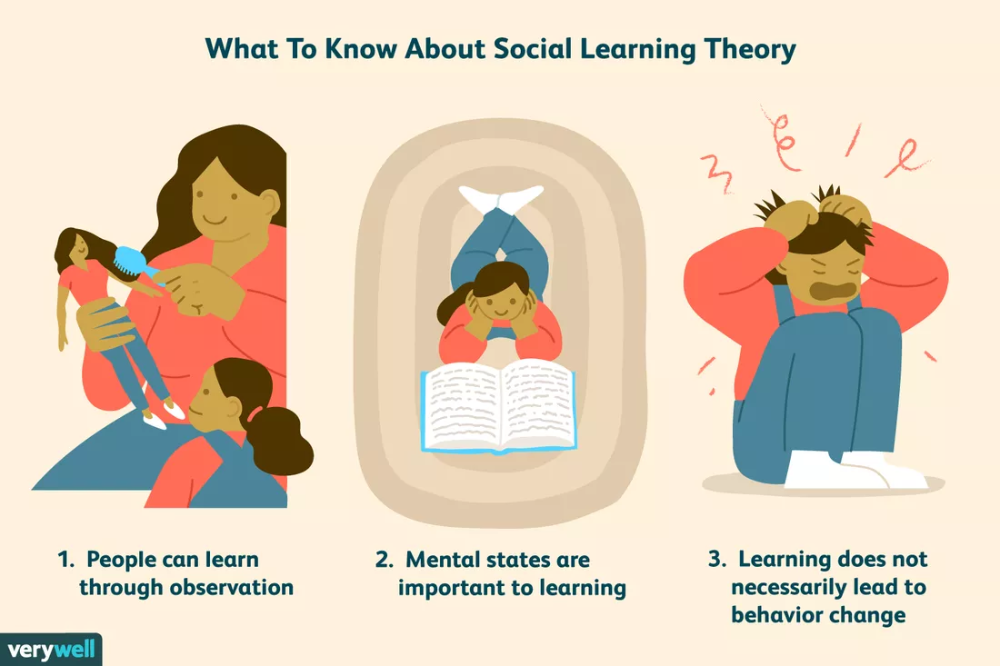 The child rejoices both in the action itself and in the fact that it takes place in the game organized by him. nine0003
The child rejoices both in the action itself and in the fact that it takes place in the game organized by him. nine0003
The development of the child's emotional need sphere is closely connected with self-awareness emerging at this time. By the age of three, the pronoun "I" appears. At the same time, the child also has a primary self-esteem - the realization not only of his “I”, but that “I am good”, “I am very good”, “I am good and no more”. It can hardly be called self-esteem in the proper sense of the word, as it is based on the child's need for emotional security and acceptance. The development of the emotional-need sphere depends on the nature of the child's communication with adults. In communication with close adults who help the child to explore the world of "adult" objects, motives for cooperation prevail, although purely emotional communication is also preserved, which is necessary at all age stages. In addition to unconditional love, emotional warmth, the child expects adults to be directly involved in all their affairs, to jointly solve any problem, whether it is the development of cutlery or the construction of a tower of cubes.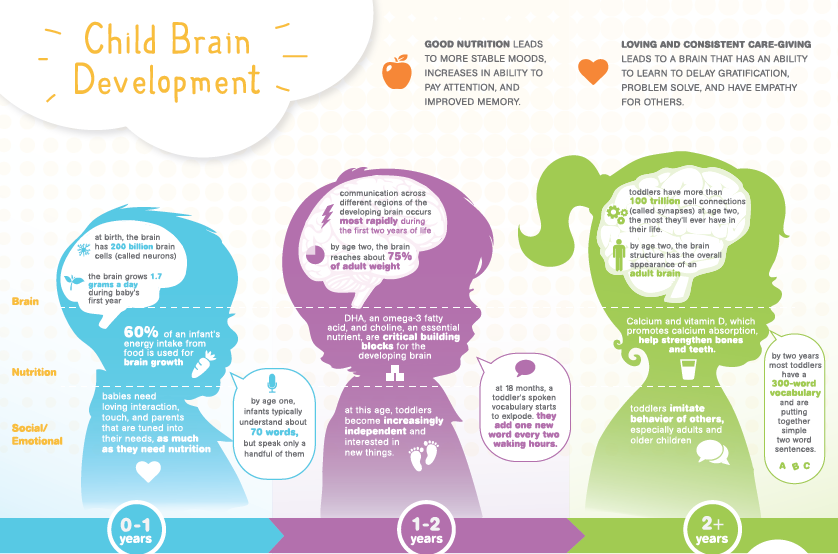 It is around such joint actions that new forms of communication with adults are developed for the child. nine0003
It is around such joint actions that new forms of communication with adults are developed for the child. nine0003
The desires of a young child are unstable and quickly transient, he cannot control and restrain them; they are limited only by punishments and rewards from adults. All desires have the same strength, since in early childhood there is no subordination of motives. This is easy to observe in a situation of choice. If a child of 2-3 years old is asked to choose one of several new toys, he will consider and sort through them for a long time. Then, after all, he will choose one, but after the next request - to go with her to another room - he will again begin to hesitate. Putting the toy in its place, he will go through the rest until he is taken away from these equally attractive things. nine0003
By the age of 3, the child's experiences are inextricably linked with the plot side of the game. He develops the story. The saucepan fell: “Oh! Spilled!” - the kid exclaims and wipes an imaginary puddle with a rag.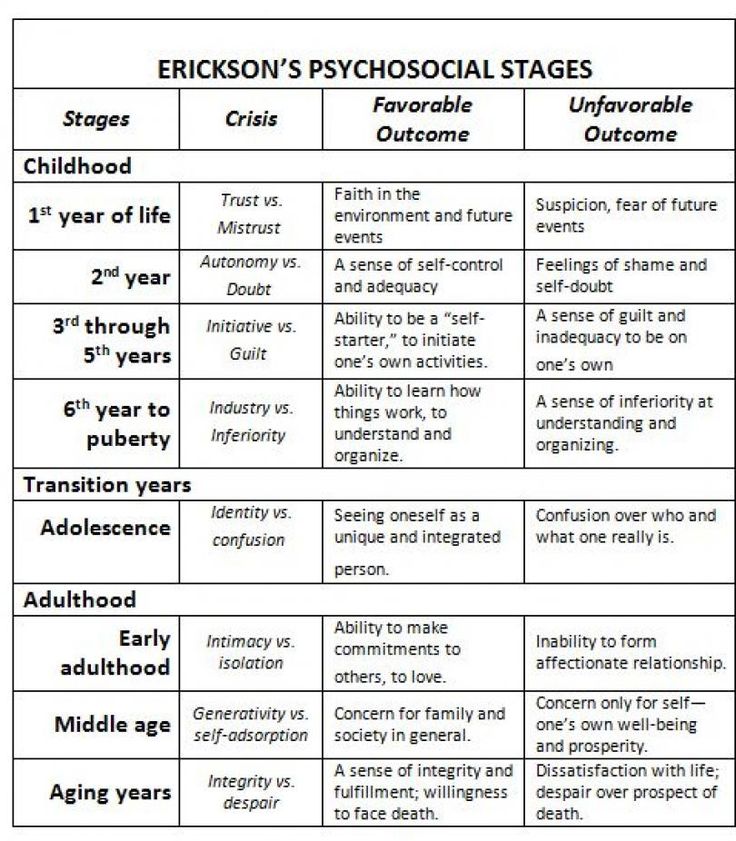 The emotional response to game events shows not only the high development of the game, but also its emotional significance for the child. At the age of three, the child is already playing calmly next to another child, but the moments of the general game are short-lived, and so far there can be no talk of the rules of the game. Best of all, children of this age succeed in joint jumping on the bed. If a small child attends a nursery, he is forced to communicate more closely with peers, and gains more experience in this regard than those who are brought up at home. But "nursery" children are not spared age-related difficulties in communication. They can be aggressive - push, hit another child, especially if he somehow infringed on their interests. A young child, communicating with children, always proceeds from his own desires, completely ignoring the desires of another. He is self-centered and not only does not understand another child, but also does not know how to empathize with him. The emotional mechanism of empathy (sympathy in a difficult situation and joint joy in luck or in a game) will appear later, in preschool childhood.
The emotional response to game events shows not only the high development of the game, but also its emotional significance for the child. At the age of three, the child is already playing calmly next to another child, but the moments of the general game are short-lived, and so far there can be no talk of the rules of the game. Best of all, children of this age succeed in joint jumping on the bed. If a small child attends a nursery, he is forced to communicate more closely with peers, and gains more experience in this regard than those who are brought up at home. But "nursery" children are not spared age-related difficulties in communication. They can be aggressive - push, hit another child, especially if he somehow infringed on their interests. A young child, communicating with children, always proceeds from his own desires, completely ignoring the desires of another. He is self-centered and not only does not understand another child, but also does not know how to empathize with him. The emotional mechanism of empathy (sympathy in a difficult situation and joint joy in luck or in a game) will appear later, in preschool childhood.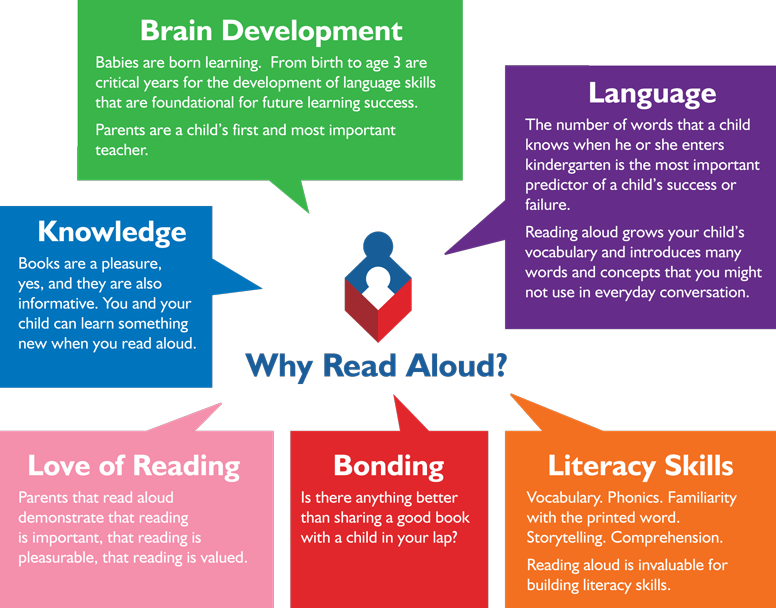 Nevertheless, communication with peers is useful and also contributes to the emotional development of the child, although not to the same extent as communication with adults. nine0003
Nevertheless, communication with peers is useful and also contributes to the emotional development of the child, although not to the same extent as communication with adults. nine0003
Higher feelings develop at an early age, the prerequisites for which were formed in infancy. Also, by the age of 3, aesthetic feelings are clearly manifested. The kid experiences the nature of music: cheerful and sad, smooth and cheerful. He rejoices in ornaments, beautiful clothes, flowering plants. Delight, like in a baby, is everything bright and brilliant, but the child learns to distinguish beautiful from ugly, harmonious from disharmonious. Based on the feeling of surprise, which was observed even in an infant, elementary curiosity arises in early childhood. Questions start to emerge. New feelings arise in relation to peers: rivalry, elements of envy, jealousy. The toddler seeks to usurp the attention of an adult and protests when it is shared between children or is given to another child. nine0003
At the end of this period, when approaching the crisis of 3 years, the child may experience affective reactions to the difficulties he is facing. If a child, when trying to do something on his own, did not succeed and there was no adult nearby, an emotional outburst is possible. These affective outbursts are best extinguished when adults react calmly enough to them. The excessive attention of adults to such manifestations acts as a positive reinforcement for the child, and he learns that pleasant moments in communication with adults come after his tears. If the child is really upset, it is enough to show him his favorite or new toy, offer to do something interesting with him. In a child, one desire is easily replaced by another, he easily switches and is happy to do a new thing. nine0003
If a child, when trying to do something on his own, did not succeed and there was no adult nearby, an emotional outburst is possible. These affective outbursts are best extinguished when adults react calmly enough to them. The excessive attention of adults to such manifestations acts as a positive reinforcement for the child, and he learns that pleasant moments in communication with adults come after his tears. If the child is really upset, it is enough to show him his favorite or new toy, offer to do something interesting with him. In a child, one desire is easily replaced by another, he easily switches and is happy to do a new thing. nine0003
The emotional development of young children is especially necessary during the crisis of 3 years of age. During this period, the child has elements of rebellious behavior, a desire to manipulate parents, jealousy towards the younger (older) child, aggression towards others. All this suggests that the baby is changing his attitude, both to himself and to others.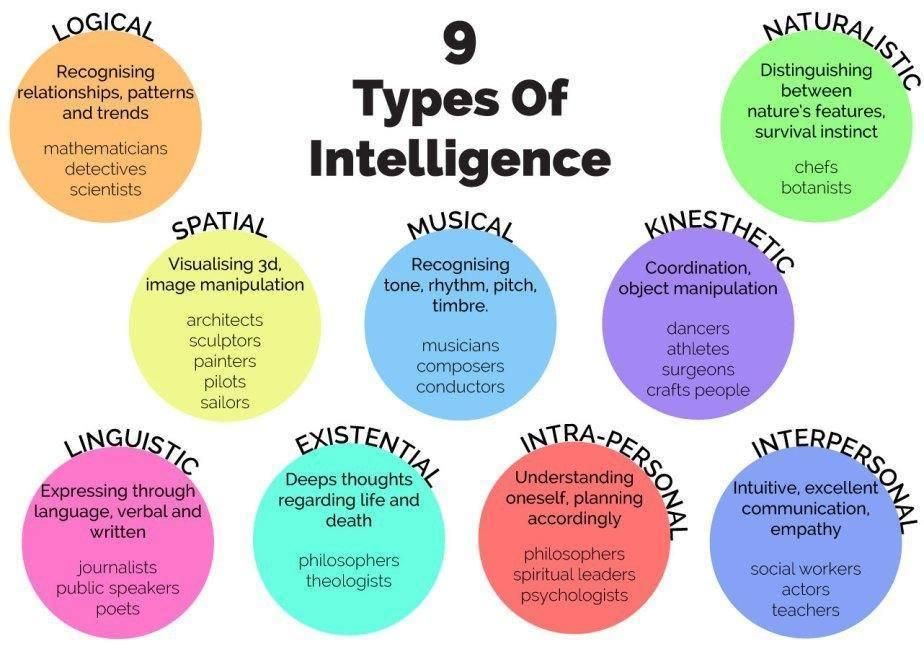 You need to calmly and respectfully treat the child, his requests, without showing aggression, explain and show by example how to behave in a difficult situation. The emotional sphere is an important component in the development of preschoolers and younger schoolchildren, since no communication, interaction will be effective if its participants are not able, firstly, to "read" the emotional state of another, and secondly, to manage their emotions. Understanding your emotions and feelings is also an important point in the formation of the personality of a growing person. Emotional well-being provides high self-esteem, formed self-control, orientation towards success in achieving goals, emotional comfort in the family and outside the family. It is emotional well-being that is the most capacious concept for determining the success of a child's development. By the age of 3, personal actions and the consciousness of “I myself” appear - the central neoplasm of this period. There is a purely emotional inflated self-esteem.
You need to calmly and respectfully treat the child, his requests, without showing aggression, explain and show by example how to behave in a difficult situation. The emotional sphere is an important component in the development of preschoolers and younger schoolchildren, since no communication, interaction will be effective if its participants are not able, firstly, to "read" the emotional state of another, and secondly, to manage their emotions. Understanding your emotions and feelings is also an important point in the formation of the personality of a growing person. Emotional well-being provides high self-esteem, formed self-control, orientation towards success in achieving goals, emotional comfort in the family and outside the family. It is emotional well-being that is the most capacious concept for determining the success of a child's development. By the age of 3, personal actions and the consciousness of “I myself” appear - the central neoplasm of this period. There is a purely emotional inflated self-esteem.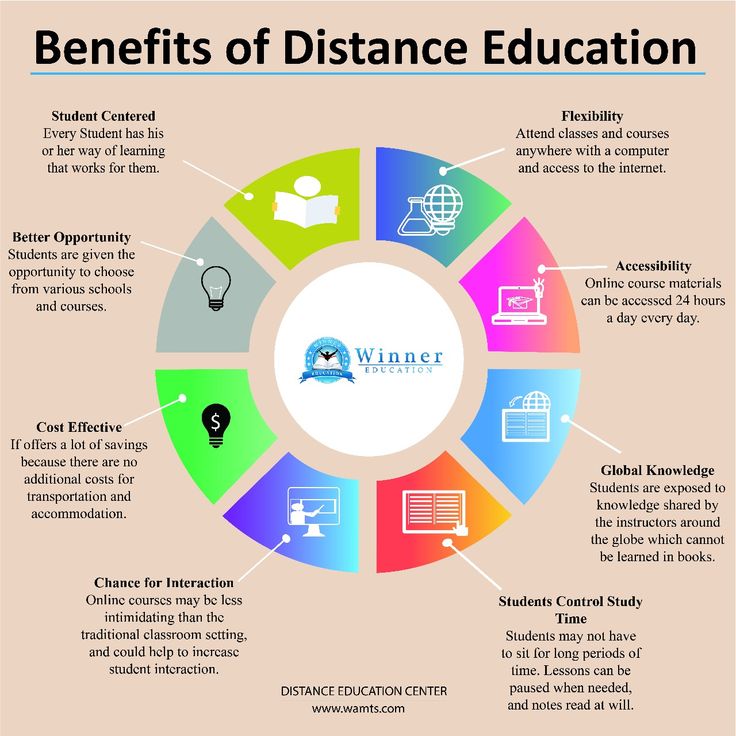 At the age of 3, the child's behavior begins to be motivated not only by the content of the situation in which he is immersed, but also by relationships with other people. Although his behavior remains impulsive, there are actions associated not with immediate momentary desires, but with the manifestation of the "I" of the child. The main reasons for the occurrence of deviations in the emotional development of a child of this age can be frequent changes in the habitual stereotype of behavior, daily routine, lack of necessary conditions for playing and independent activity, incorrect educational methods (creating a one-sided emotional attachment, lack of a unified approach to the child, etc.) . nine0003
At the age of 3, the child's behavior begins to be motivated not only by the content of the situation in which he is immersed, but also by relationships with other people. Although his behavior remains impulsive, there are actions associated not with immediate momentary desires, but with the manifestation of the "I" of the child. The main reasons for the occurrence of deviations in the emotional development of a child of this age can be frequent changes in the habitual stereotype of behavior, daily routine, lack of necessary conditions for playing and independent activity, incorrect educational methods (creating a one-sided emotional attachment, lack of a unified approach to the child, etc.) . nine0003
The emergence of an emotional reaction to praise creates conditions for the development of self-esteem and a sense of pride. At first, feelings of pride are unstable and arise only with a direct assessment of the child by an adult. As positive assessments are repeated, aimed at the same qualities, pride becomes stable and constant.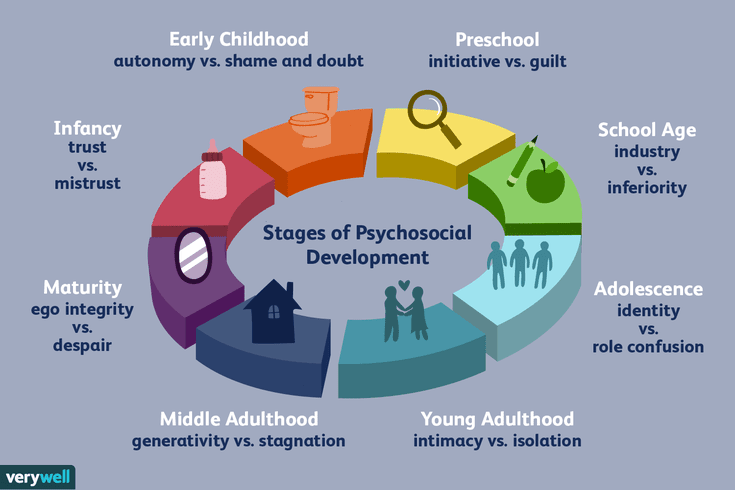 There is a need to always receive and maintain a positive assessment of an adult that satisfies the baby's pride, which indicates the emergence of the first rudiments of self-esteem. With its appearance, the child's reactions to external evaluation become more complicated. When a new assessment contradicts the old one, the child's resistance arises. Therefore, for a long time he continues to be proud of the quality that was positively assessed in the past, despite the negative assessment of it in the present. Under the influence of the new evaluation, if it persists long enough, the child's pride is rebuilt accordingly. And the feeling caused by an episodic, short-term assessment is unstable. Under the influence of positive and negative assessments on the baby, a feeling of shame arises, associated with all the past experience of the child's interaction with others. It is a manifestation of children's pride, the emerging sense of pride and dignity. The basis of the feeling of shame is the formation of ideas about positively and negatively evaluated patterns of behavior.
There is a need to always receive and maintain a positive assessment of an adult that satisfies the baby's pride, which indicates the emergence of the first rudiments of self-esteem. With its appearance, the child's reactions to external evaluation become more complicated. When a new assessment contradicts the old one, the child's resistance arises. Therefore, for a long time he continues to be proud of the quality that was positively assessed in the past, despite the negative assessment of it in the present. Under the influence of the new evaluation, if it persists long enough, the child's pride is rebuilt accordingly. And the feeling caused by an episodic, short-term assessment is unstable. Under the influence of positive and negative assessments on the baby, a feeling of shame arises, associated with all the past experience of the child's interaction with others. It is a manifestation of children's pride, the emerging sense of pride and dignity. The basis of the feeling of shame is the formation of ideas about positively and negatively evaluated patterns of behavior.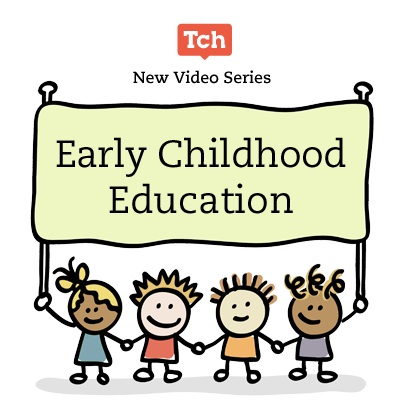 It occurs in a pre-preschooler when his behavior deviates from a positively evaluated sample in a negative direction. At the same time, the child himself feels this deviation and perceives such a situation as a loss of the positive opinion of adults, a decrease in his dignity. nine0003
It occurs in a pre-preschooler when his behavior deviates from a positively evaluated sample in a negative direction. At the same time, the child himself feels this deviation and perceives such a situation as a loss of the positive opinion of adults, a decrease in his dignity. nine0003
When a child enters kindergarten, a new stage of his emotional development begins. A powerful stimulus for the manifestation of emotions is the children's team, as well as various types of joint activities organized by the educator with peers (games, educational activities, walks), where the child acquires emotional experience in communicating with other people and develops a certain attitude towards himself.
Knowledge and ideas about the norms of behavior, supplemented by an emotional attitude towards these norms, turn into convictions and become internal motivators
children's activities and behaviour.
Adults contribute to the development of a child's positive attitude towards other people, cultivate respect and tolerance regardless of social origin, race and nationality, language, religion, gender, age, personal and behavioral identity (appearance, physical disabilities).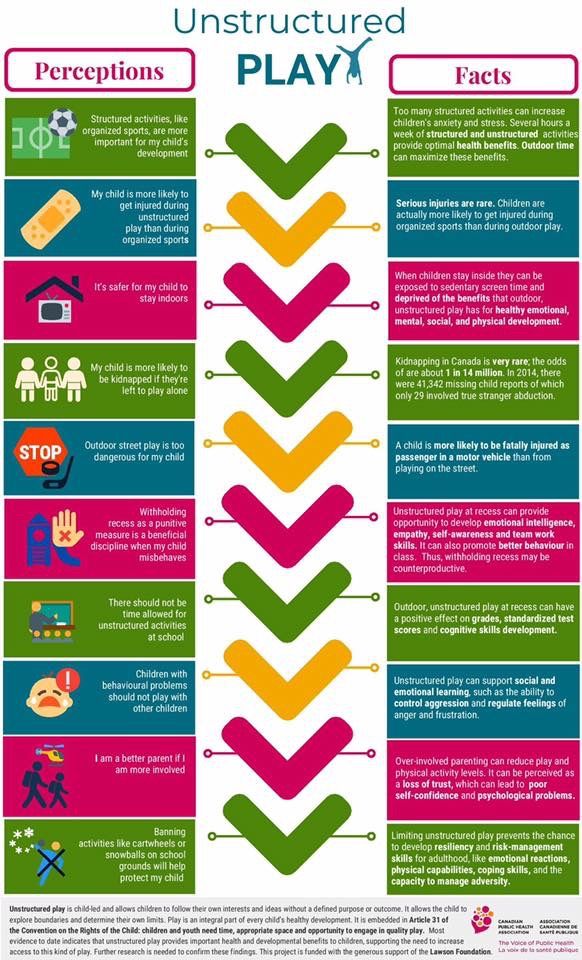 Adults help to understand that all people are different, it is necessary to respect the self-esteem of other people, take into account their opinion, desires, views in communication, play, joint activities. Encourage manifestations of benevolent attention, sympathy, empathy. It is important that the child has the desire and ability to help, support another person. nine0003
Adults help to understand that all people are different, it is necessary to respect the self-esteem of other people, take into account their opinion, desires, views in communication, play, joint activities. Encourage manifestations of benevolent attention, sympathy, empathy. It is important that the child has the desire and ability to help, support another person. nine0003
Adults create opportunities for introducing children to the values of cooperation with other people, helping to realize the need for people in each other. To do this, children should be encouraged to play together, organize their joint activities aimed at creating a common product. In the process of staging a performance, constructing a common building, making an artistic panel together with peers and adults, etc., the child acquires the ability to set common goals, plan joint work, coordinate and control his desires, coordinate opinions and actions. Adults contribute to the development in children of a sense of responsibility for another person, a common cause, a given word.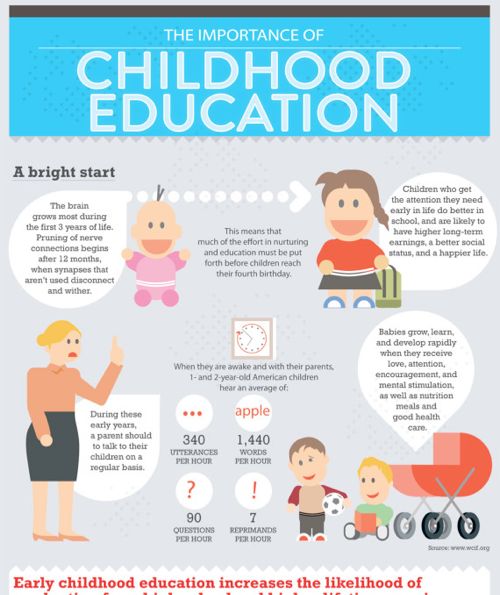 nine0003
nine0003
Adults pay special attention to the development of the child's communicative competence. Help children to recognize the emotional experiences and states of others - joy, grief, fear, bad and good mood, etc .; express their feelings and experiences. To do this, adults, together with children, discuss various situations from life, stories, fairy tales, poems, look at pictures, drawing the attention of children to the feelings, states, actions of other people; they organize theatrical performances and dramatization games, during which the child learns to distinguish and convey the moods of the characters portrayed, empathizes with them, and receives patterns of moral behavior. nine0003
Adults contribute to the development of social skills in children: they help to master various ways of resolving conflict situations, to negotiate, to follow the order, to establish new contacts. An important aspect of the social development of a child in preschool age is the development of elementary rules of etiquette (greet, thank, behave at the table, etc.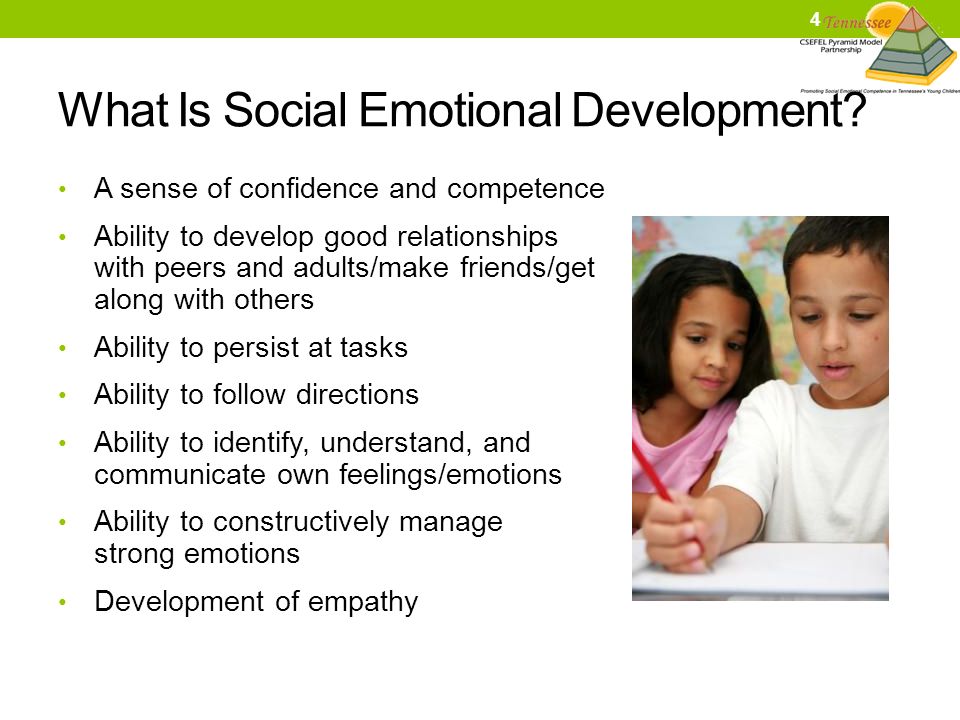 ). Children should be introduced to the elementary rules of safe behavior at home, on the street (know who to contact if you are lost on the street, give your name, home address, etc.). nine0003
). Children should be introduced to the elementary rules of safe behavior at home, on the street (know who to contact if you are lost on the street, give your name, home address, etc.). nine0003
It is important to create conditions for the development of a careful, responsible attitude of the child to the environment, the man-made world, take care of animals and plants, feed the birds, keep clean, take care of toys, books, etc.
Educators, parents - the first and most important teachers of the child. His first school - your home - will have a huge impact on what he considers important in life.
“Years of miracles” is what scientists call the first five years of a child's life. The emotional attitude towards people's life laid down at this time and the presence or absence of incentives for intellectual development leave an indelible imprint on all further behavior and way of thinking of a person. nine0003
Each person should be able to listen to another, perceive and strive to understand him.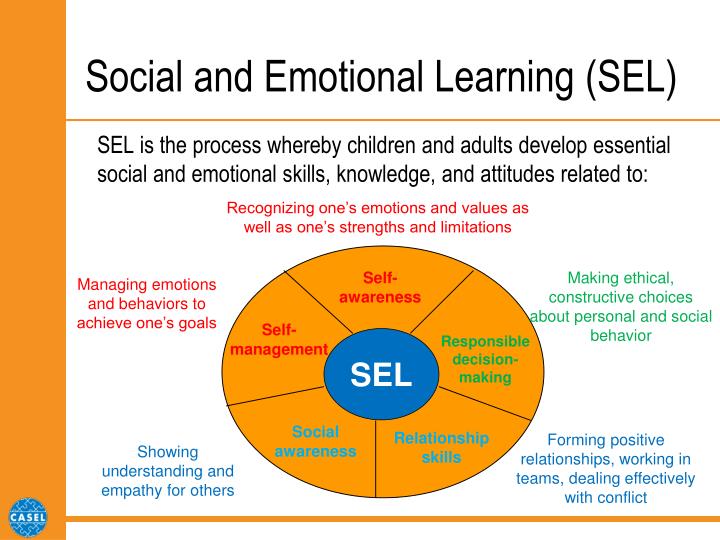 How a person feels another, can influence him without offending or causing aggression, depends on his future success in interpersonal communication. Very few of us know how to really listen to other people well, to be receptive to the nuances in their behavior. It takes a certain skill and a certain amount of effort to combine communication with attentive observation and listening. Equally important are the ability to listen and understand oneself, that is, to be aware of one's feelings and actions at various moments of communication with others. nine0003
How a person feels another, can influence him without offending or causing aggression, depends on his future success in interpersonal communication. Very few of us know how to really listen to other people well, to be receptive to the nuances in their behavior. It takes a certain skill and a certain amount of effort to combine communication with attentive observation and listening. Equally important are the ability to listen and understand oneself, that is, to be aware of one's feelings and actions at various moments of communication with others. nine0003
And all this has to be learned. Skill does not come to a person by itself; it is acquired at the cost of effort spent on learning. However, you, as the first teachers of the child, can greatly help him in this difficult work if you begin to instill communication skills at a very early age.
References:
1. Izard K.E. Psychology of emotions / Perev. from English. St. Petersburg: Peter, 2003. - 464 p. ill. "Masters of Psychology".
ill. "Masters of Psychology".
2. Danilina T.A., Zedgenidze V.Ya., Stepina N.M. In the world of children's emotions. - M.: Academy, 2001. -117 p. nine0003
3. Kryukova S.V., Slobodyanik N.P. I am surprised, angry, afraid, boasting and rejoicing. The program of emotional development of children of preschool and primary school age: A practical guide. M.: Genesis, 2001.- 98 p.
4. Kryazheva N.L. The world of children's emotions. Children 5-7 years old / Artists G. V. Sokolov, V. N. Kurov. Yaroslavl: Academy of Development, 2004. - 160 p. ill. "Your child: observe, study, develop."
5. Minaeva V.M. The development of emotions in preschoolers. Classes. Games. Handbook for practitioners of preschool institutions. M.: ARKTI, 2001. - 48 p. (Development and education of a preschooler). nine0003
Published: 11/10/2020
Socio-emotional
Socio-emotional development
Issues of socio-emotional development are reflected in the federal state requirements for the structure of the main general educational program of preschool education.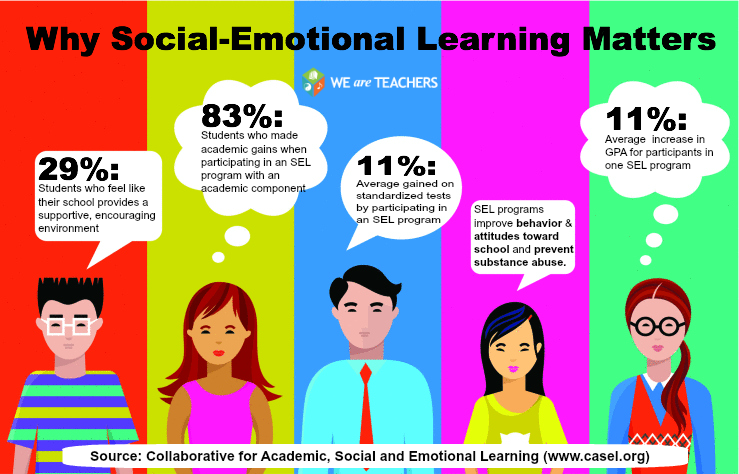
The content of the educational field "Socialization" is aimed at achieving the goals of mastering the initial ideas of a social nature and including children in the system of social relations. nine0003
This goal cannot be achieved without social and emotional development of preschoolers.
Social and emotional development:
- ability to cope with one's emotions, feelings;
- effective communication;
- relationships with oneself, with loved ones, with friends, with family, with society.
Why is it necessary to develop socio-emotionally? The sooner a child learns
to understand the state of others, the easier it will be for him to get used to any team, to find a common language with peers and adults. nine0003
The problem of the development of emotions, their role in the emergence of motives as regulators of the child's activity and behavior is one of the most important and complex problems of pedagogy.
The task of the harmonious development of preschool children implies not only a certain level of development of a wide range of knowledge and skills,
but also the formation of self-esteem and the image of "I", as well as a fairly high level of development of his emotional sphere, social orientation and moral position.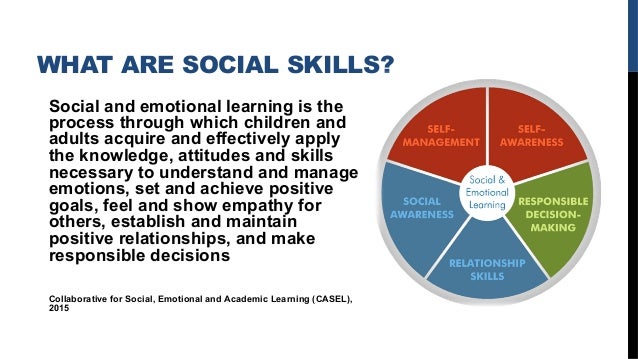 nine0003
nine0003
When a child enters kindergarten, a new stage of his emotional development begins. A powerful incentive for the manifestation of emotions is the children's team, as well as various types of joint activities organized by the educator with peers (games, educational activities, walks), where the child acquires emotional experience in communicating with other people and develops a certain attitude towards himself.
Knowledge and ideas about the norms of behavior, supplemented by an emotional attitude to these norms, turn into convictions and become internal stimuli for children's activity and behavior. nine0003
The main goal of socio-emotional development:
introduce the child into the complex world of human emotions, help him live through a certain emotional state, explain what it means, and give it a verbal name. Accumulating certain moments of living and fixing on any feeling, the child will be able to create his own emotional fund, with the help of which he will be able to navigate in his own feelings and the feelings of the people who surround him. A person judges the emotional state of another by special expressive movements, facial expressions, voice changes. Posture, gesture, features of movements largely complement facial expressions and play an important role in conveying an emotional state. nine0003
A person judges the emotional state of another by special expressive movements, facial expressions, voice changes. Posture, gesture, features of movements largely complement facial expressions and play an important role in conveying an emotional state. nine0003
Socio-emotional development is the process of transferring and further developing the socio-cultural experience accumulated by mankind. This experience is represented in the personality structure by a unique combination of four components that are closely interconnected: cultural skills, specific knowledge, role behavior (behavior in a particular situation, social competence) and social qualities (cooperation and concern for others, rivalry and initiative, autonomy and independence, social adaptation)
All these components of social development are closely interconnected. Changes in one of them inevitably entail changes in the other three. Emotional distress associated with difficulty in communicating with other children can lead to two types of behavior: negative bright emotional reactions (anxiety is manifested by aggressiveness) and a stable negative attitude towards communication (restrained reaction, isolation, avoidance of communication).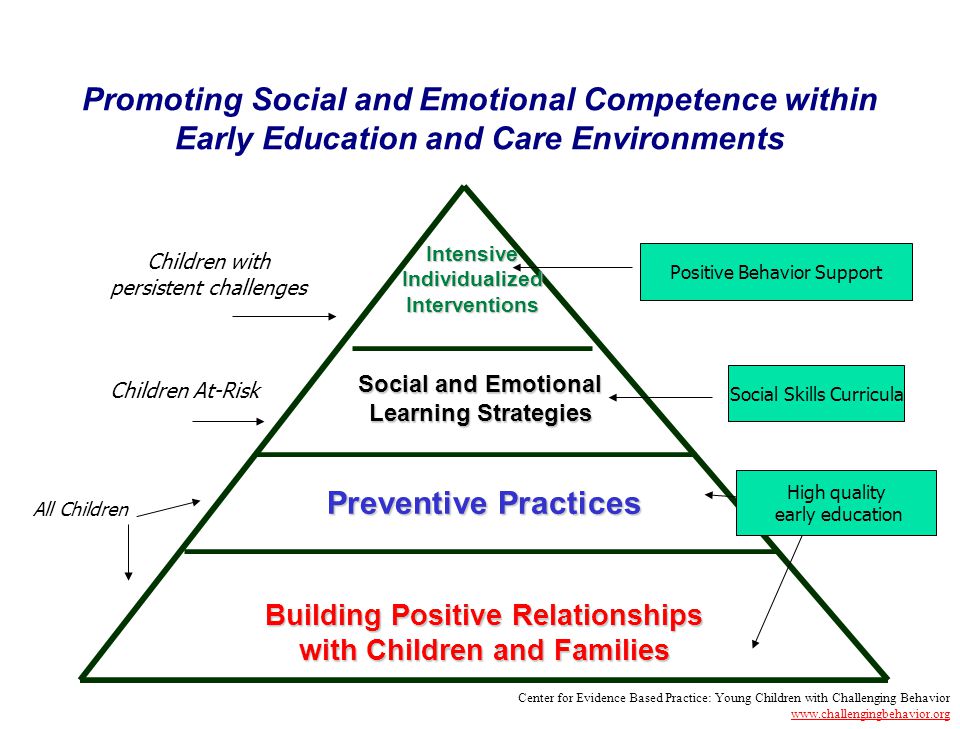
The most important basis for the full-fledged social and personal development of a child is his positive sense of self: confidence in his abilities, that he is good, that he is loved. Adults care about the emotional well-being of the child (support, encourage, help to believe in their strengths and capabilities), respect and appreciate regardless of his achievements, advantages and disadvantages, establish trusting relationships with children; contribute to the development of a child's self-esteem, awareness of their rights and freedoms (to have their own opinion, choose friends, toys, activities, have personal belongings, use personal time at their own discretion). Adults contribute to the development of a child's positive attitude towards people around them, cultivate respect and tolerance, regardless of social origin, race and nationality, language, religion, gender, age, personal and behavioral identity (appearance, physical disabilities). Adults help to understand that all people are different, it is necessary to respect the self-esteem of other people, take into account their opinions, desires, views in communication, play, joint activities.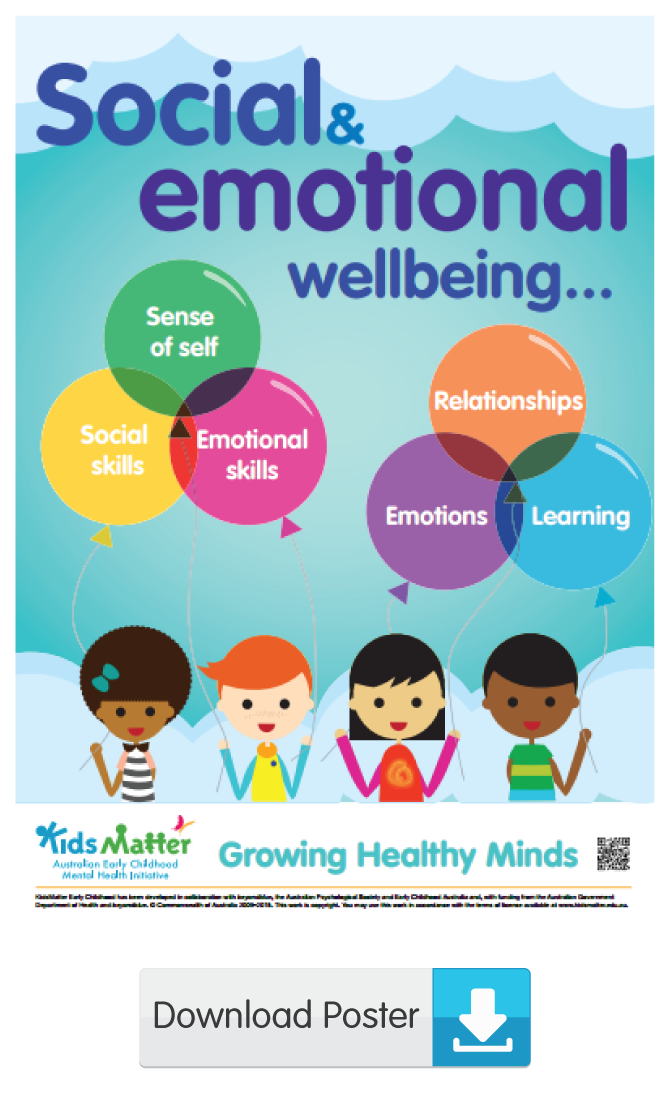 Encourage manifestations of benevolent attention, sympathy, empathy. It is important that the child has the desire and ability to help, support another person. nine0003
Encourage manifestations of benevolent attention, sympathy, empathy. It is important that the child has the desire and ability to help, support another person. nine0003
Adults create opportunities for introducing children to the values of cooperation with other people, helping to realize the need for people in each other. To do this, children should be encouraged to play together, organize their joint activities aimed at creating a common product. In the process of staging a performance, constructing a common building, making an artistic panel together with peers and adults, etc., the child acquires the ability to set common goals, plan joint work, coordinate and control his desires, coordinate opinions and actions. Adults contribute to the development in children of a sense of responsibility for another person, a common cause, a given word. nine0003
Adults pay special attention to the development of the child's communicative competence. Help children to recognize the emotional experiences and states of others - joy, grief, fear, bad and good mood, etc .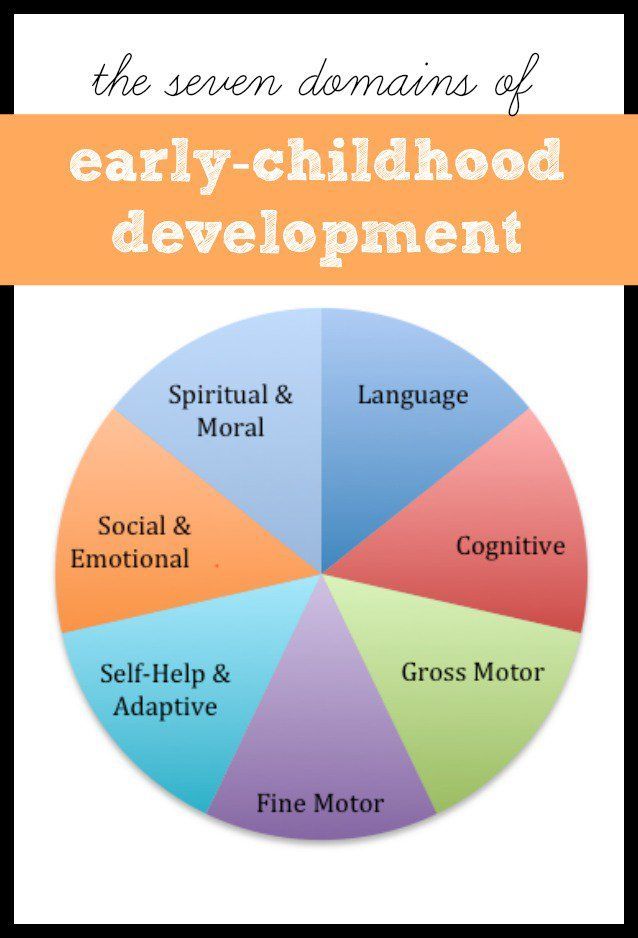 ; express their feelings and experiences. To do this, adults, together with children, discuss various situations from life, stories, fairy tales, poems, look at pictures, drawing the attention of children to the feelings, states, actions of other people; they organize theatrical performances and dramatization games, during which the child learns to distinguish and convey the moods of the characters portrayed, empathizes with them, and receives patterns of moral behavior. nine0003
; express their feelings and experiences. To do this, adults, together with children, discuss various situations from life, stories, fairy tales, poems, look at pictures, drawing the attention of children to the feelings, states, actions of other people; they organize theatrical performances and dramatization games, during which the child learns to distinguish and convey the moods of the characters portrayed, empathizes with them, and receives patterns of moral behavior. nine0003
Adults contribute to the development of social skills in children: they help to master various ways of resolving conflict situations, to negotiate, to follow the order, to establish new contacts. An important aspect of the social development of a child in preschool age is the development of elementary rules of etiquette (greet, thank, behave at the table, etc.). Children should be introduced to the elementary rules of safe behavior at home, on the street (know who to contact if you are lost on the street, give your name, home address, etc.